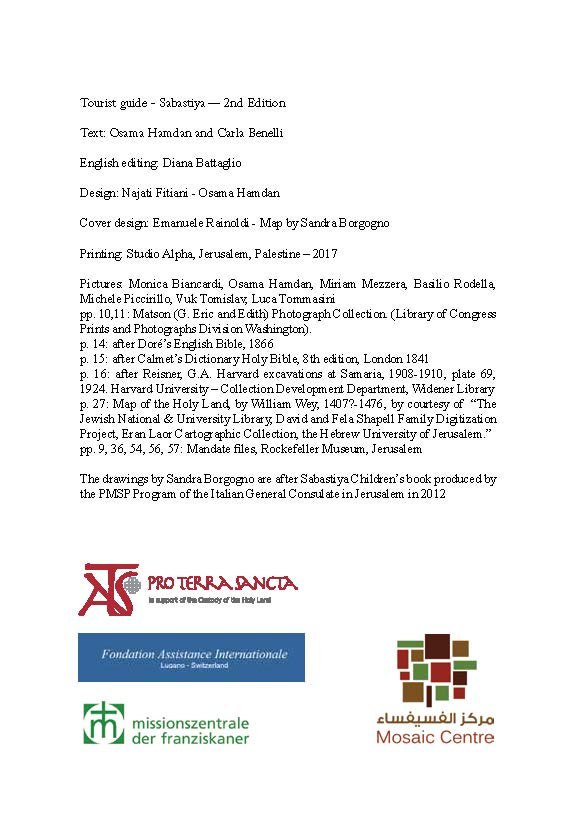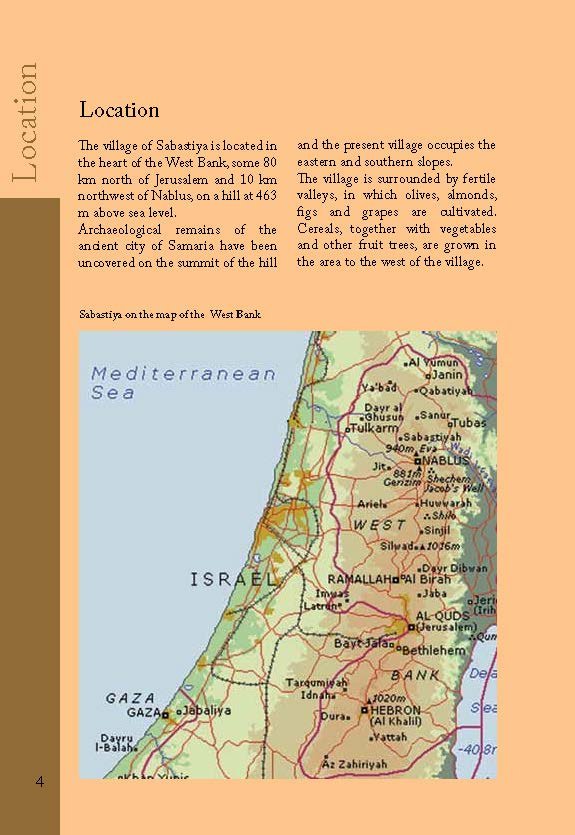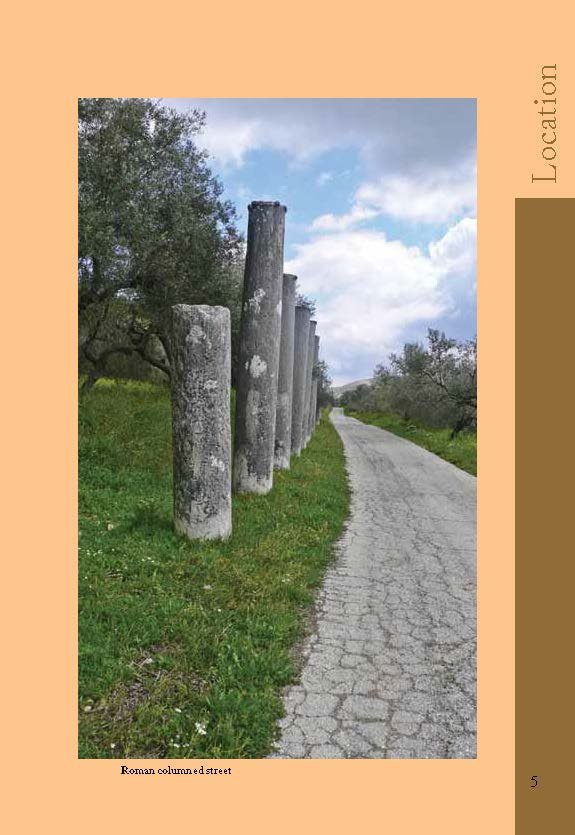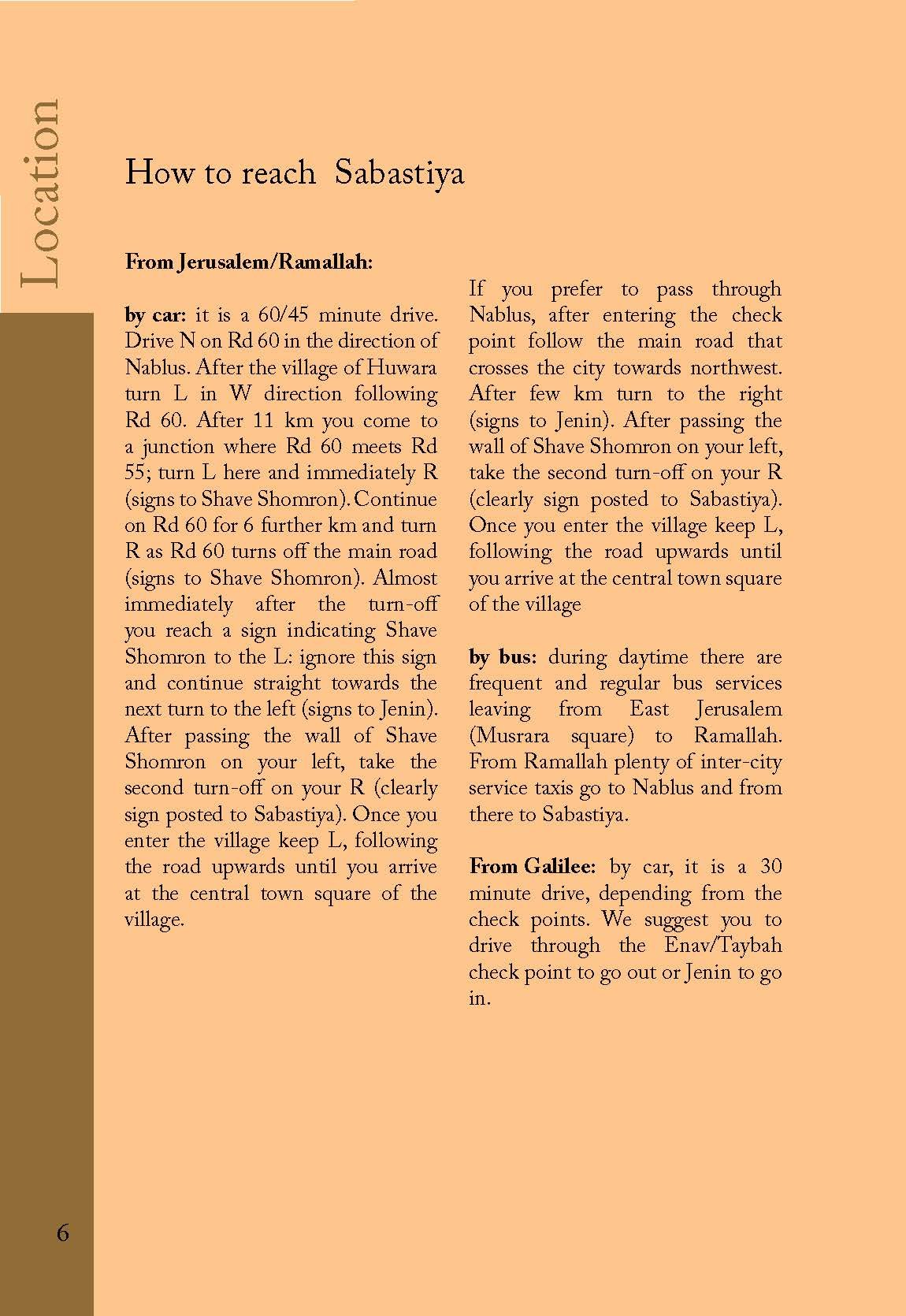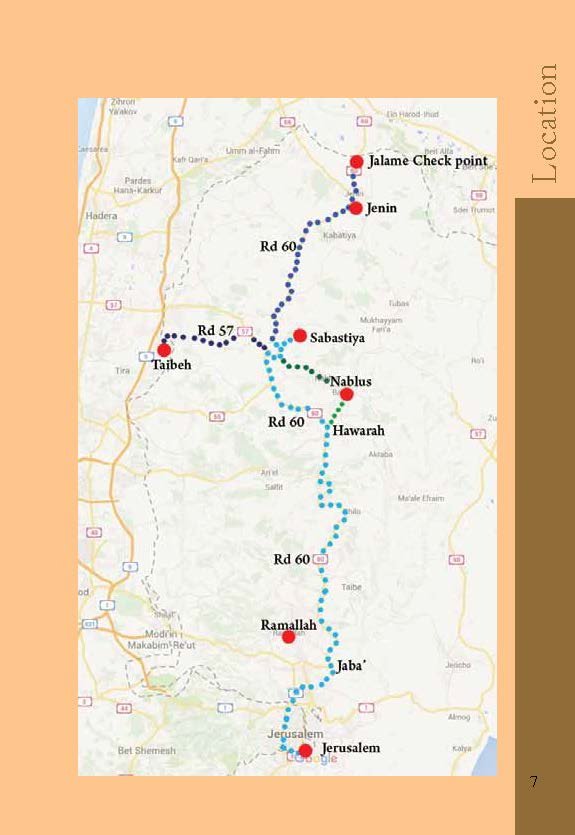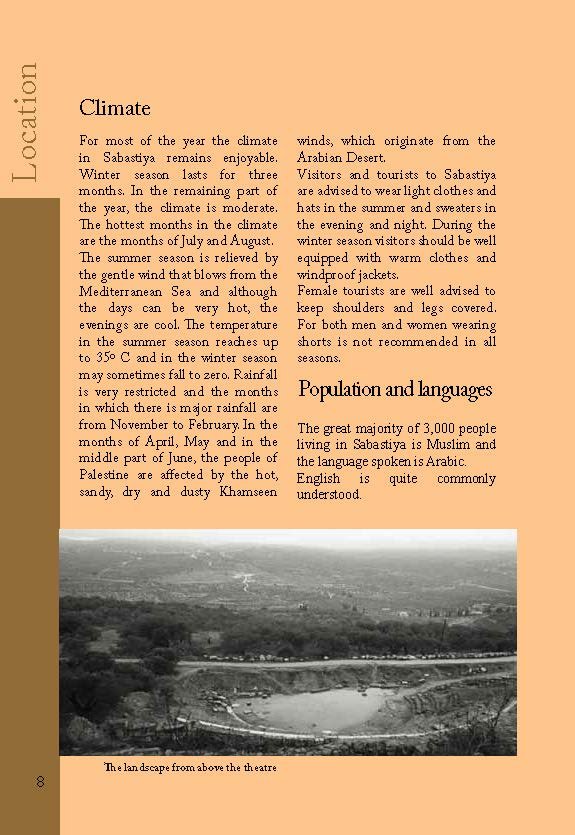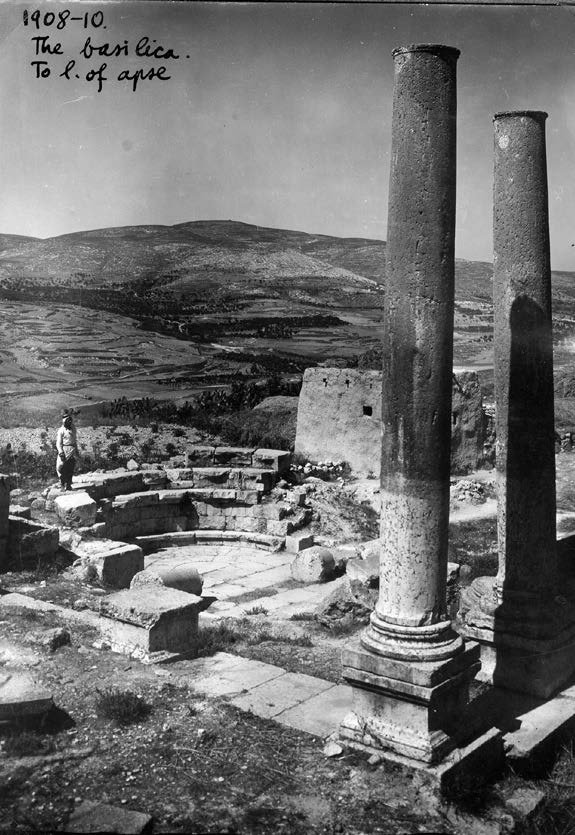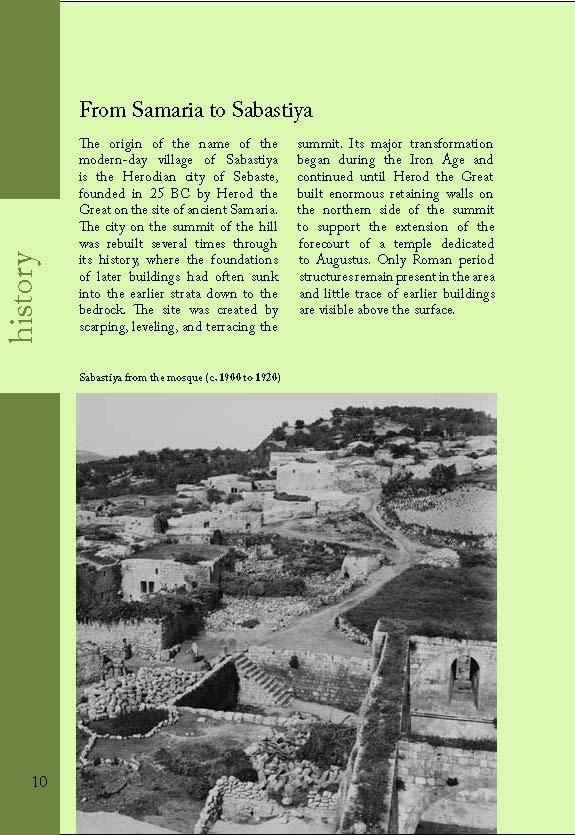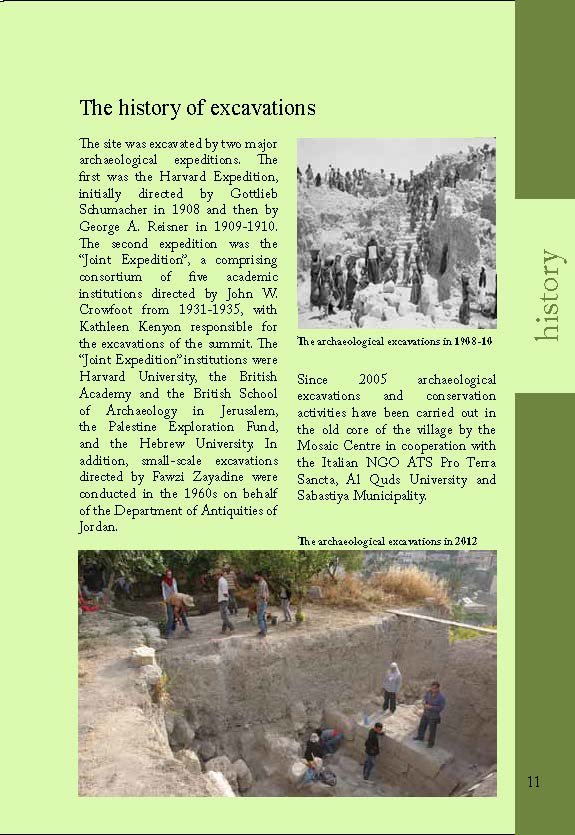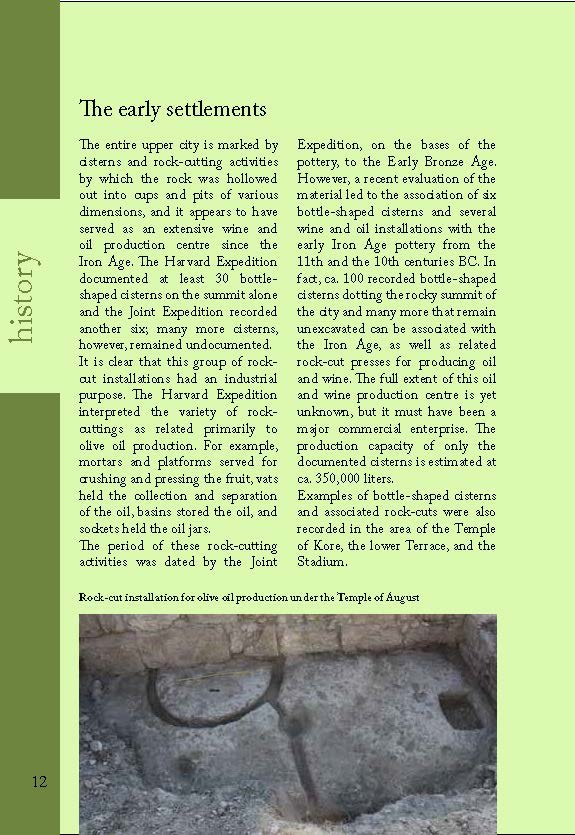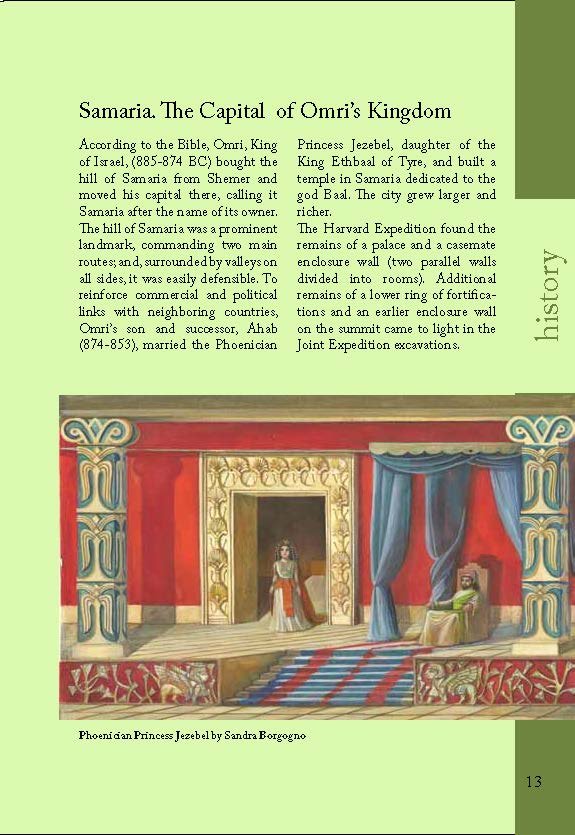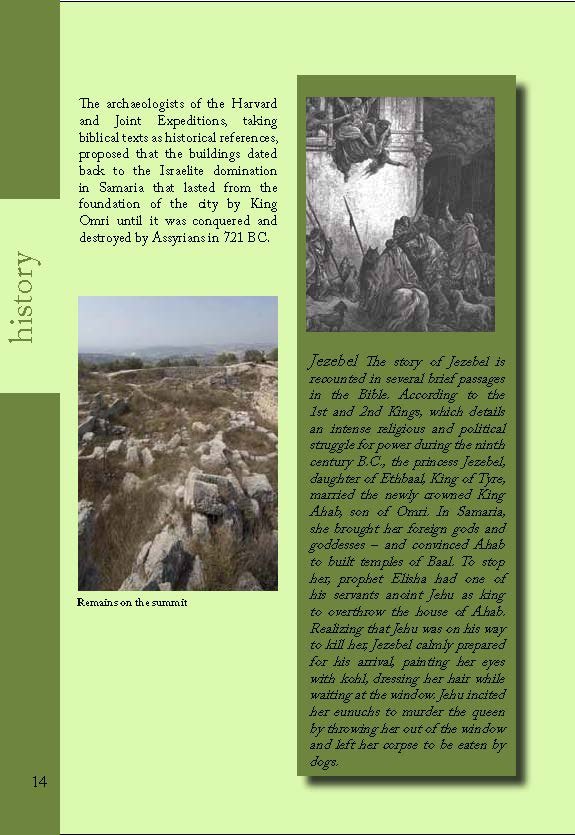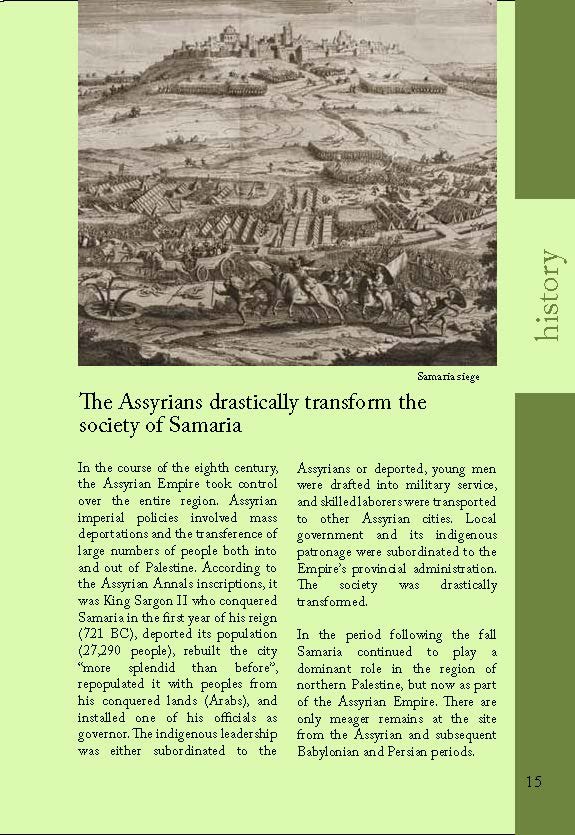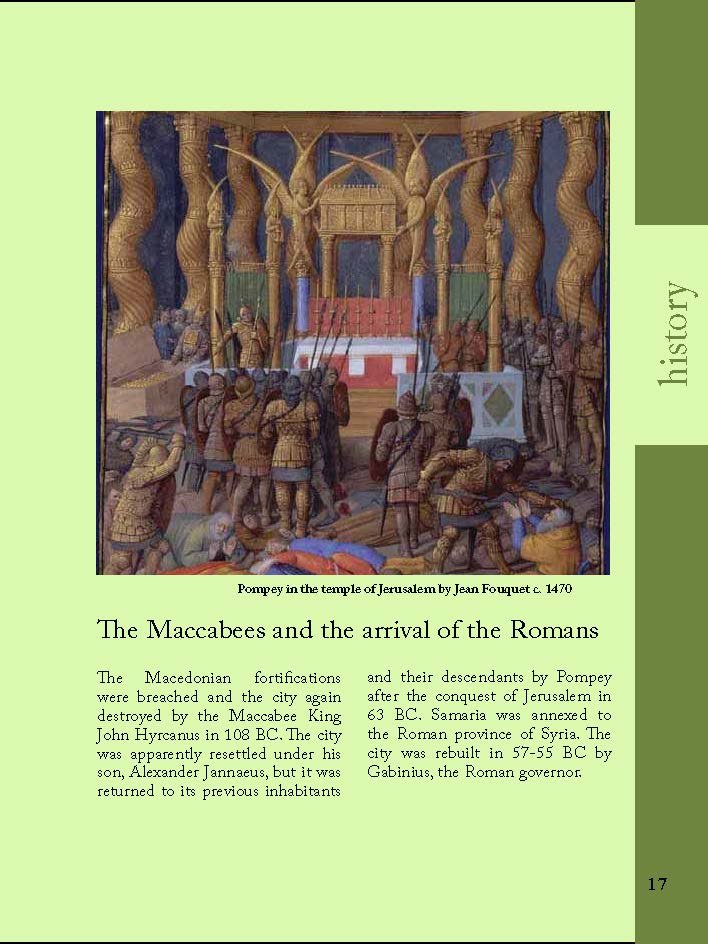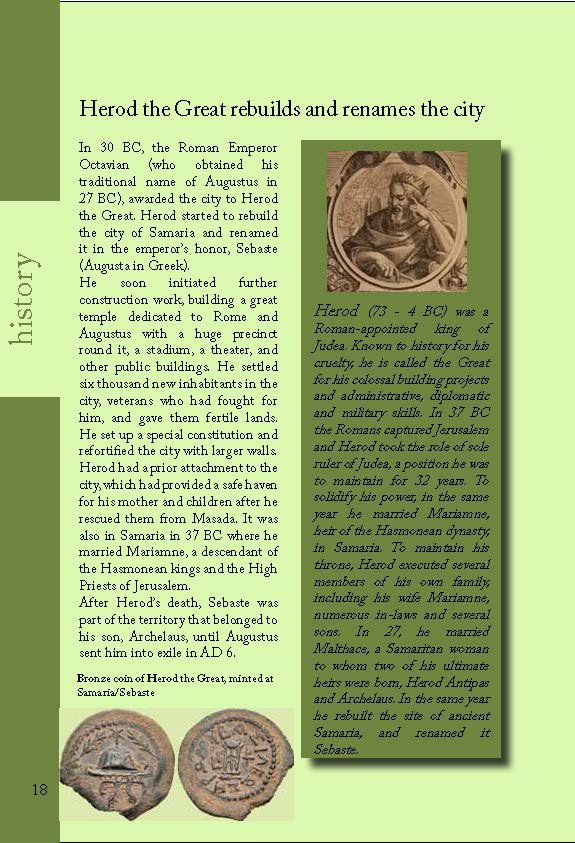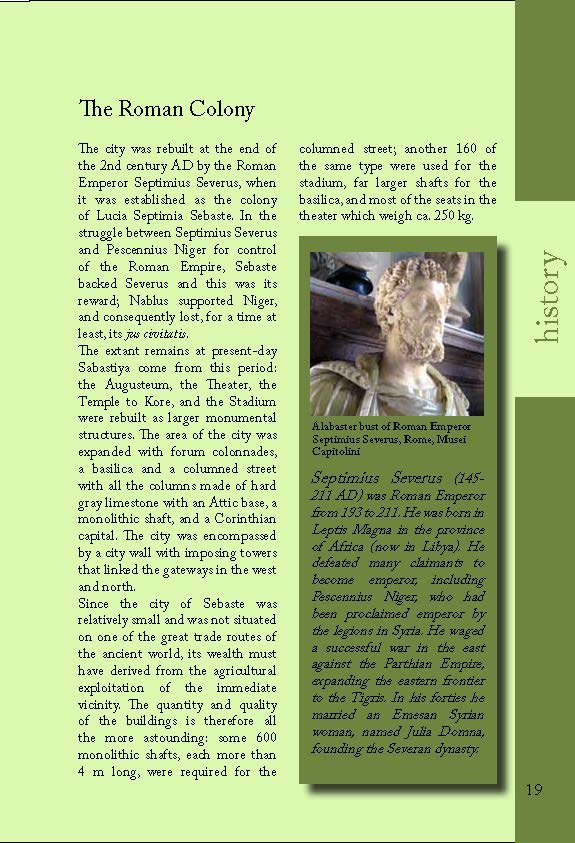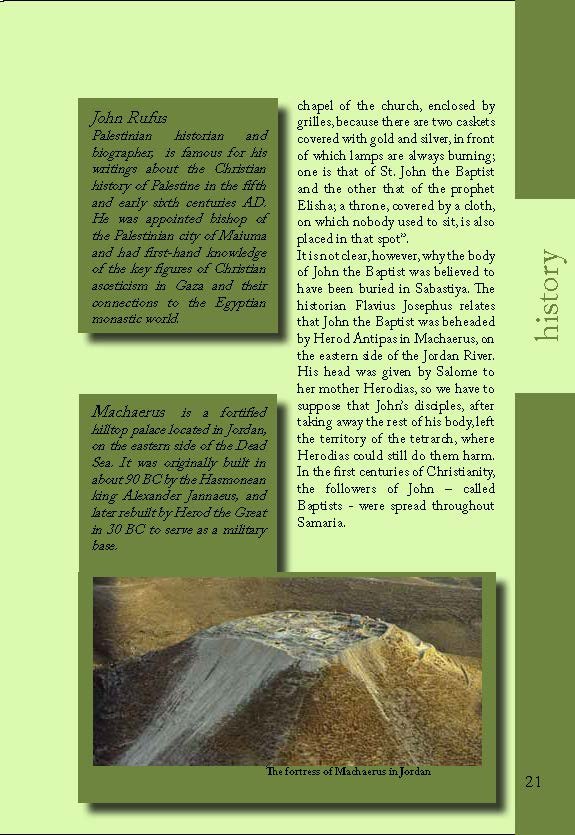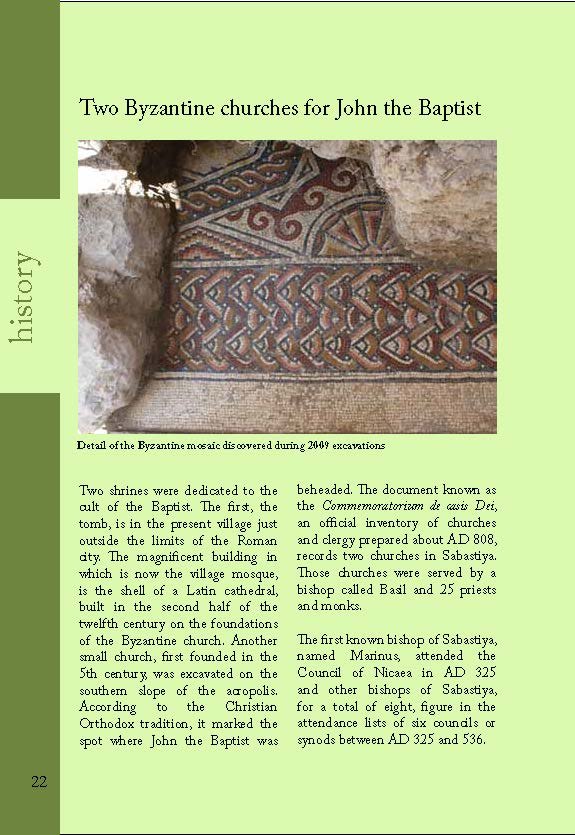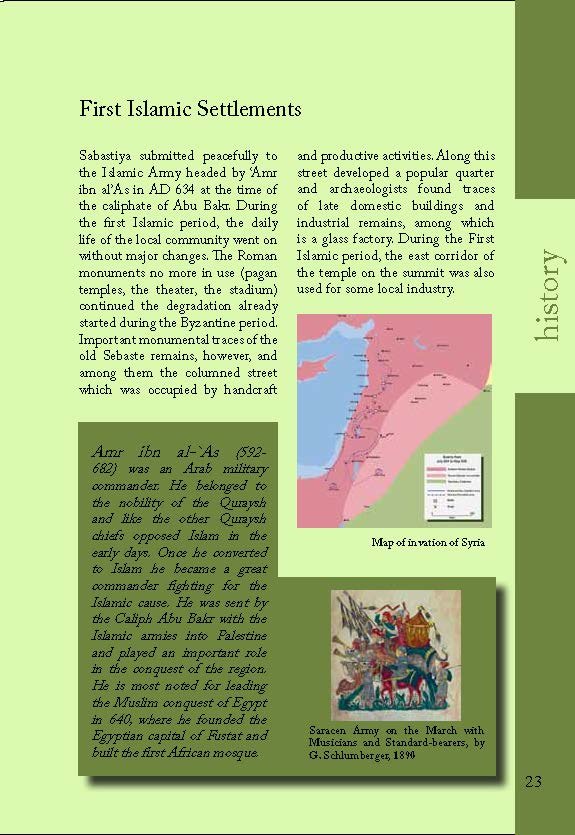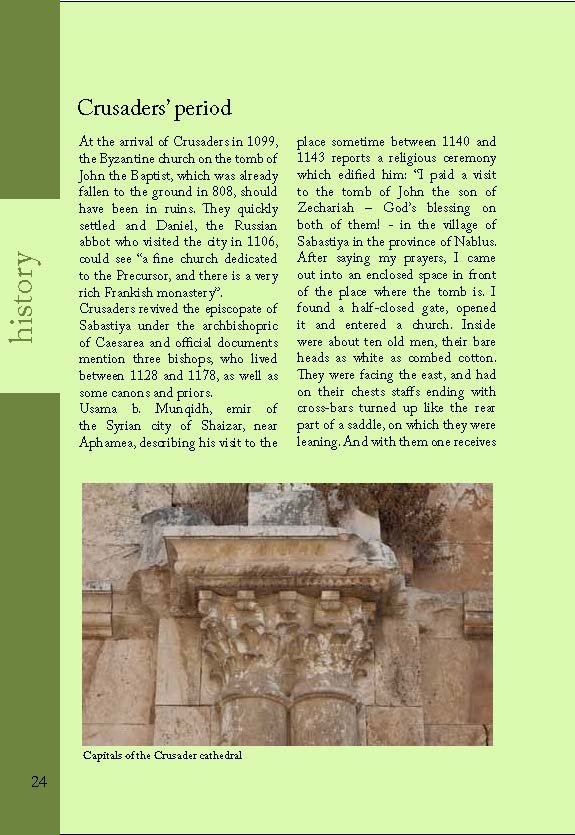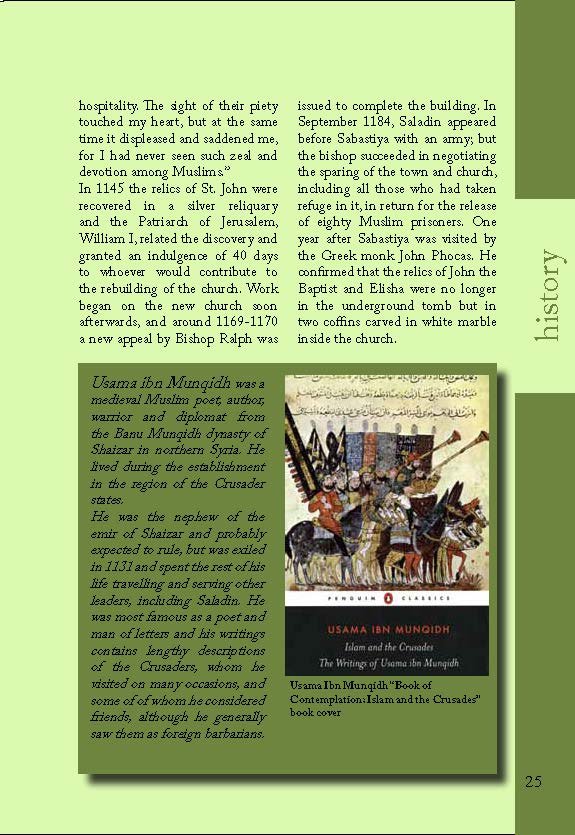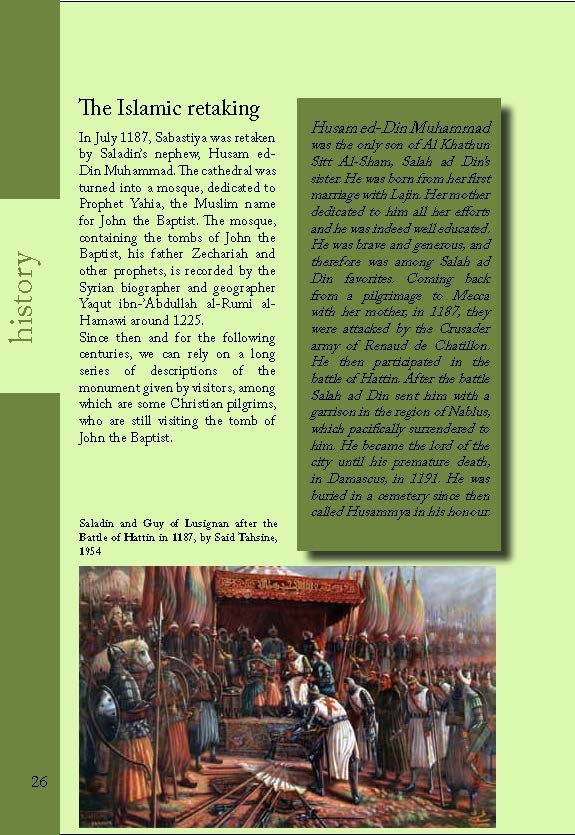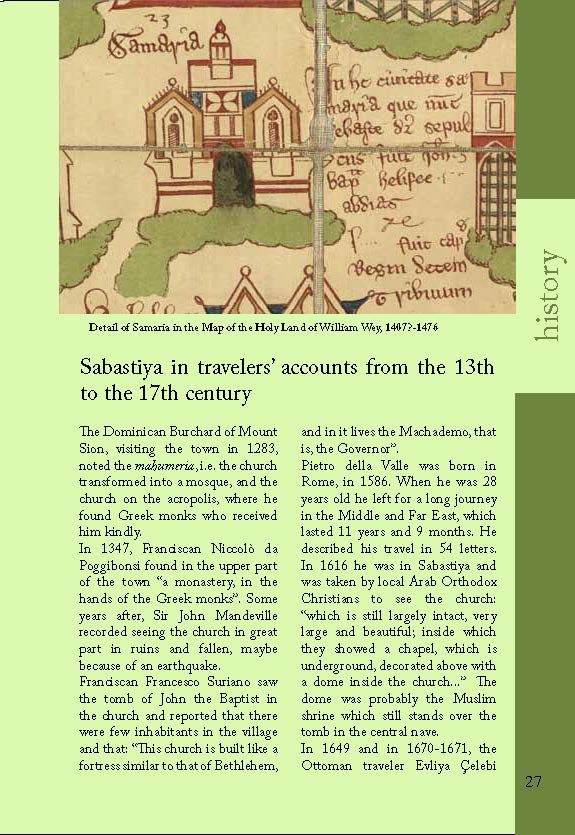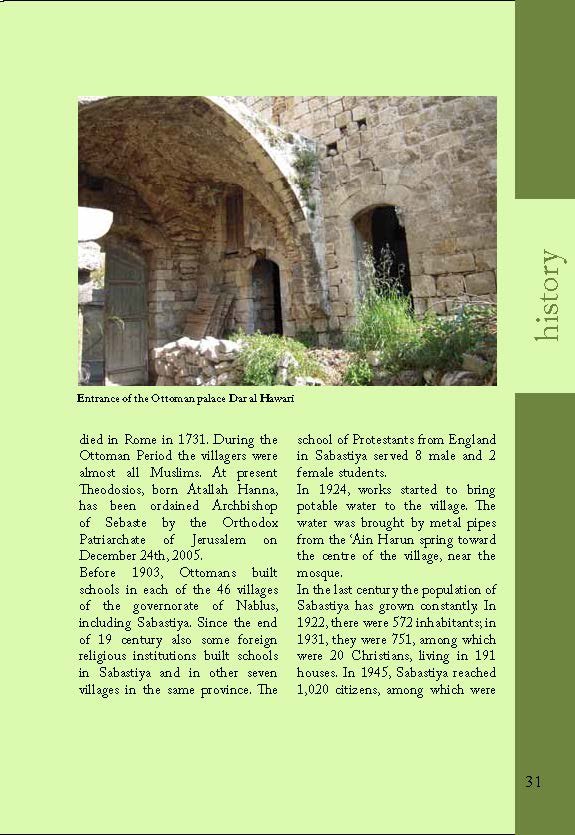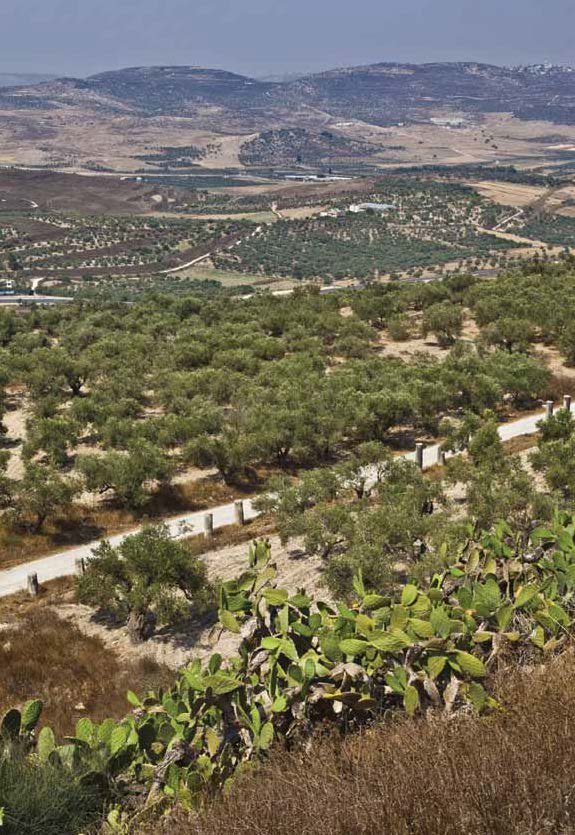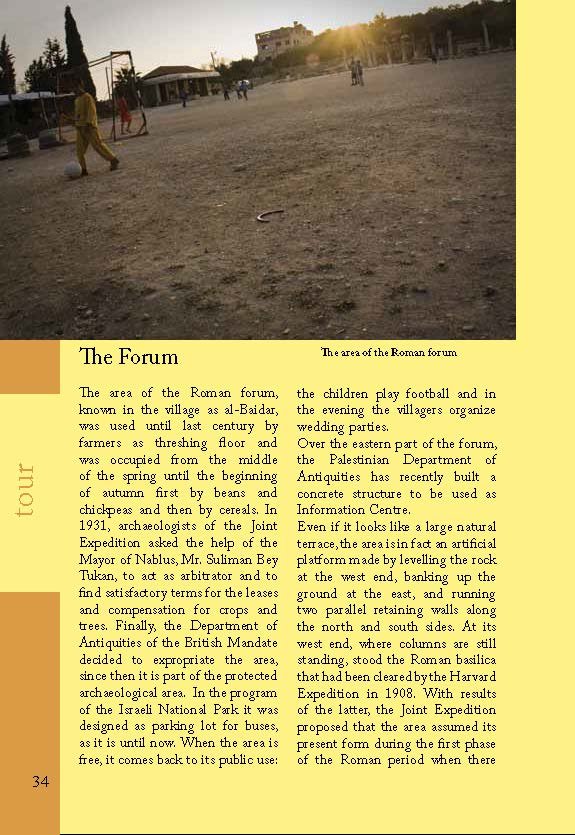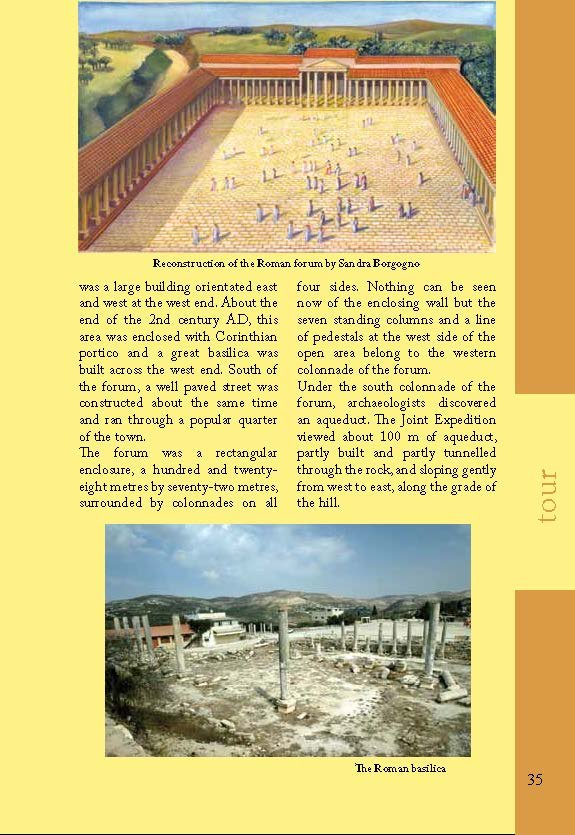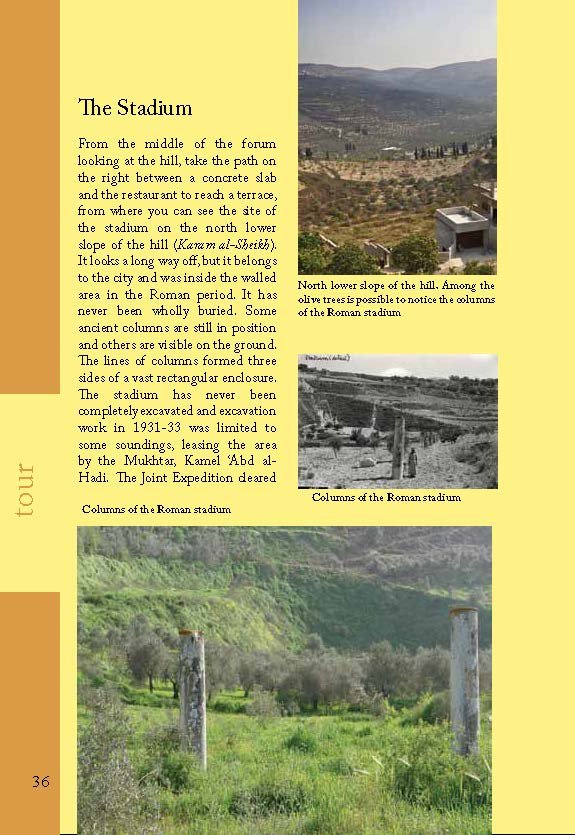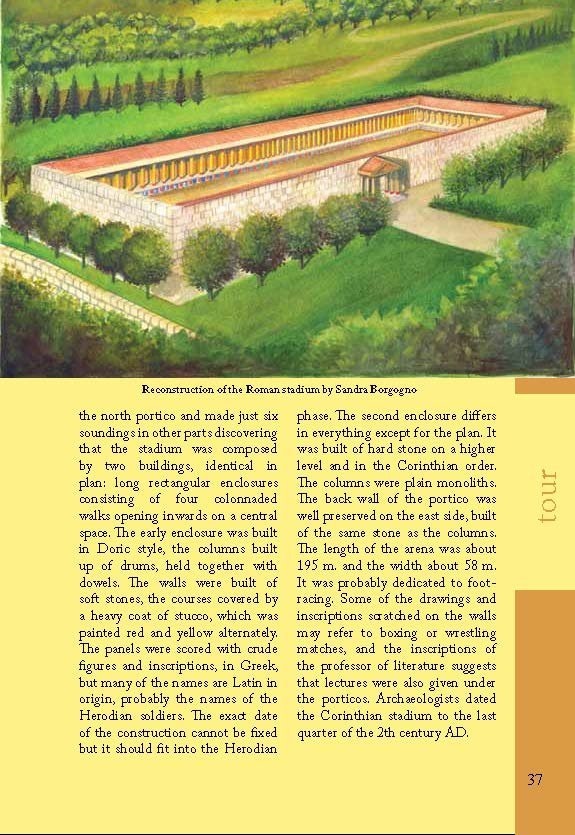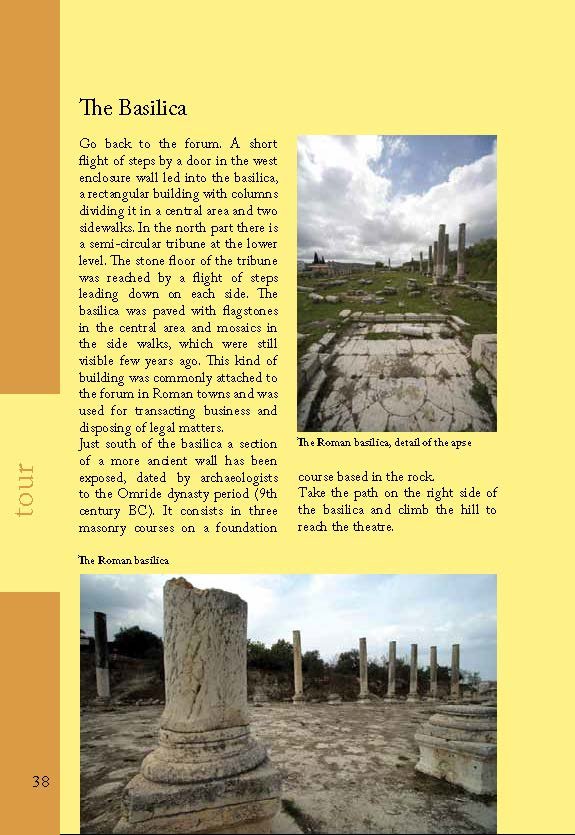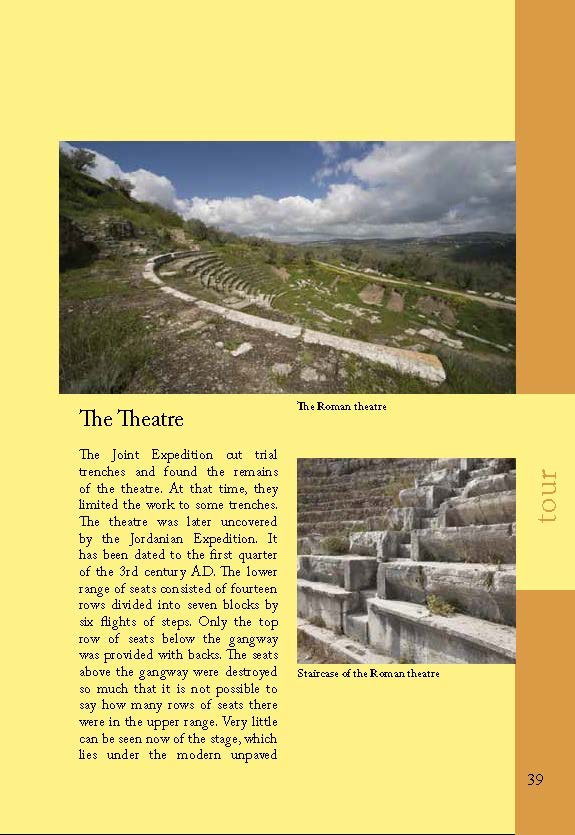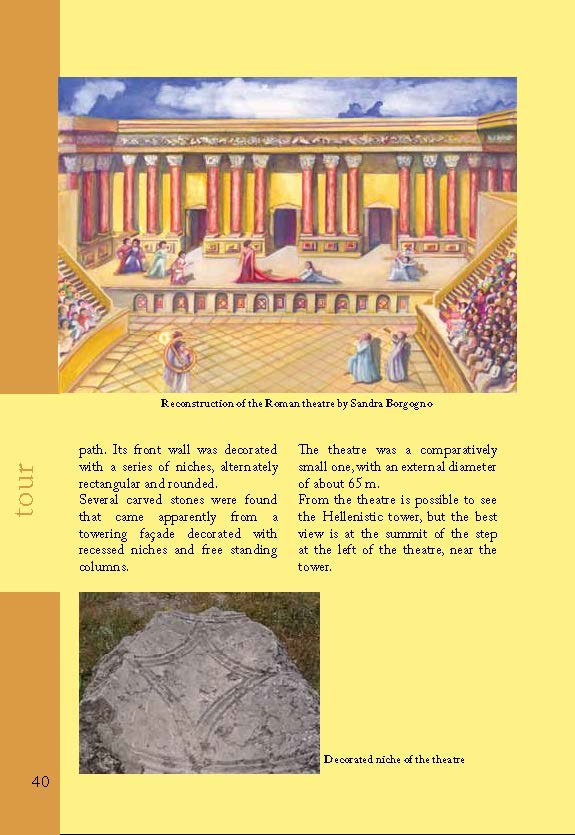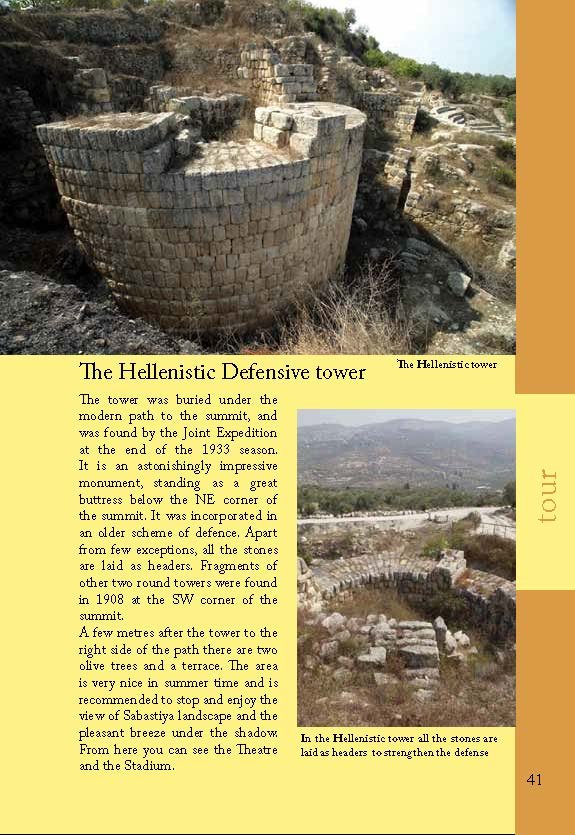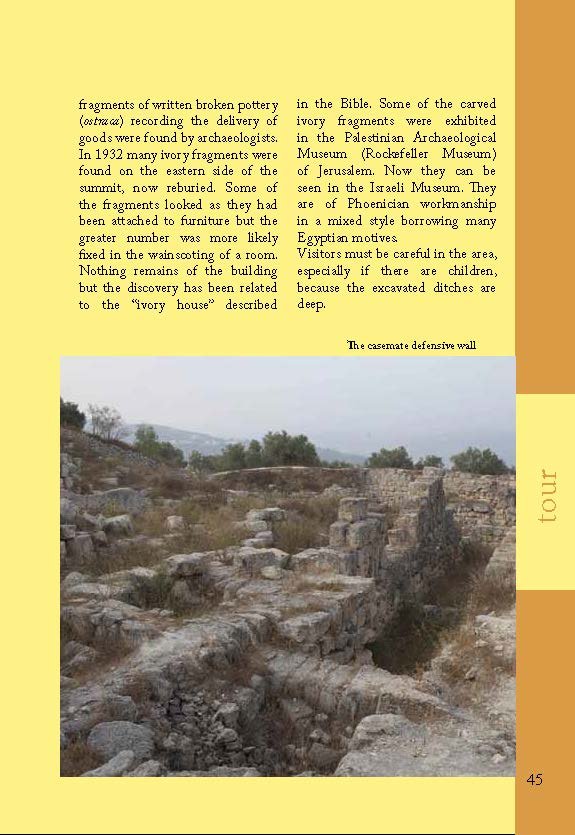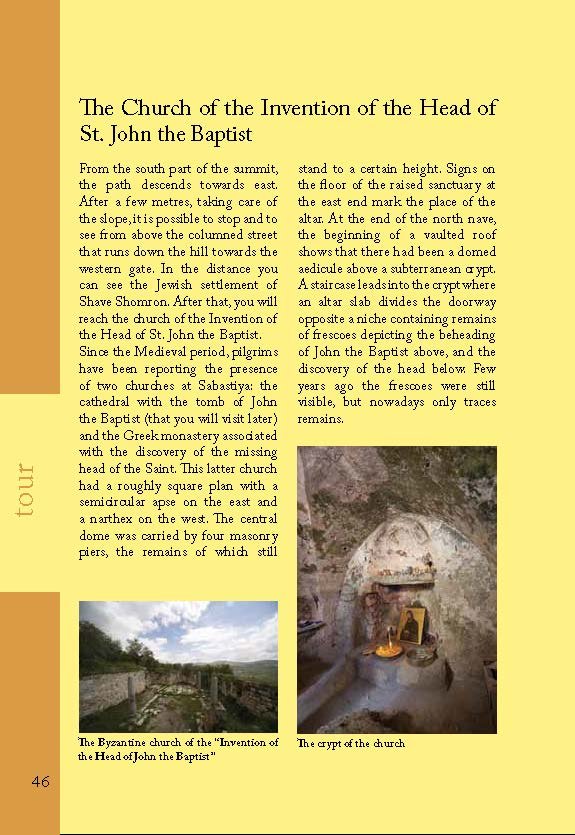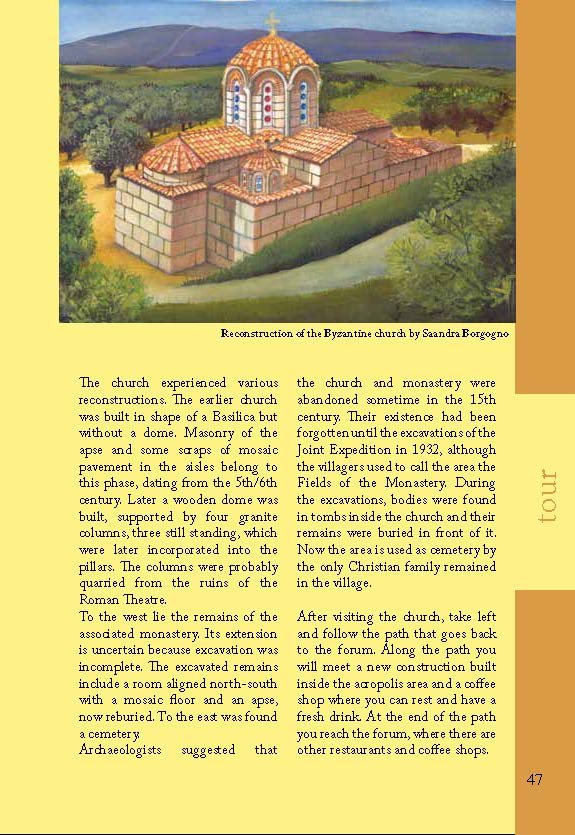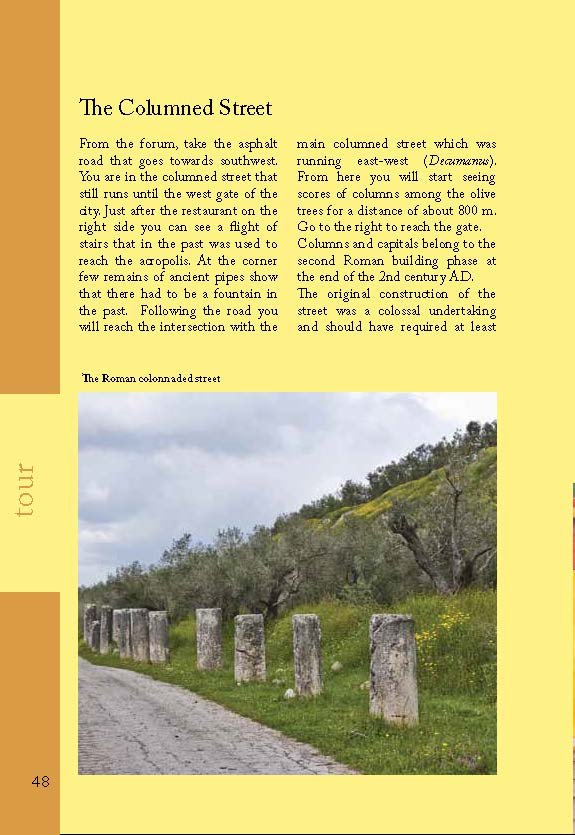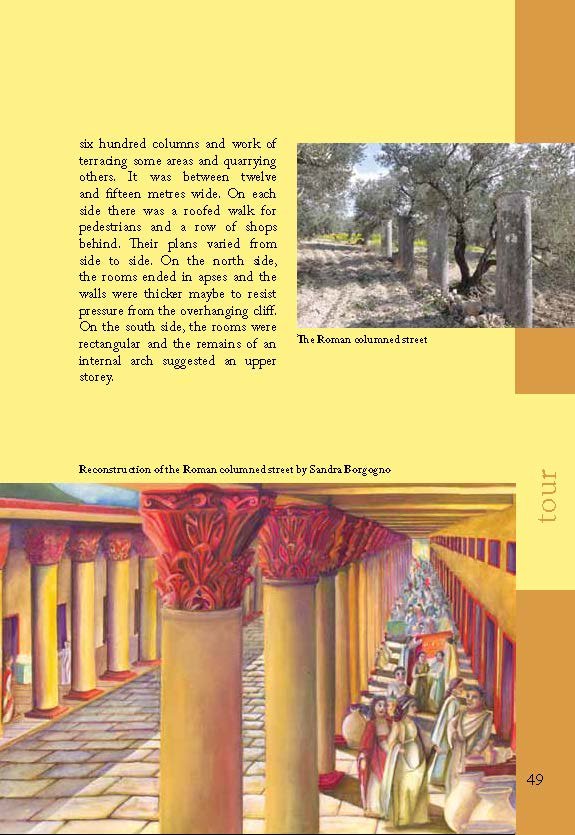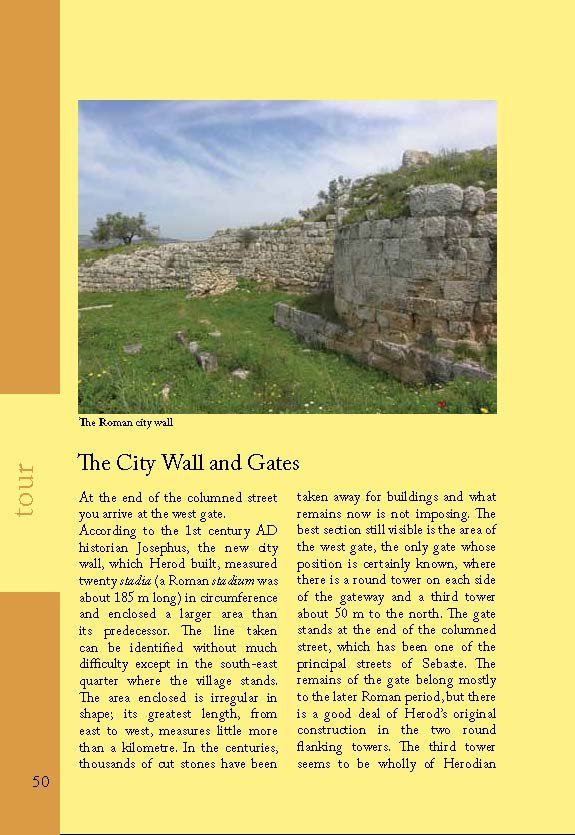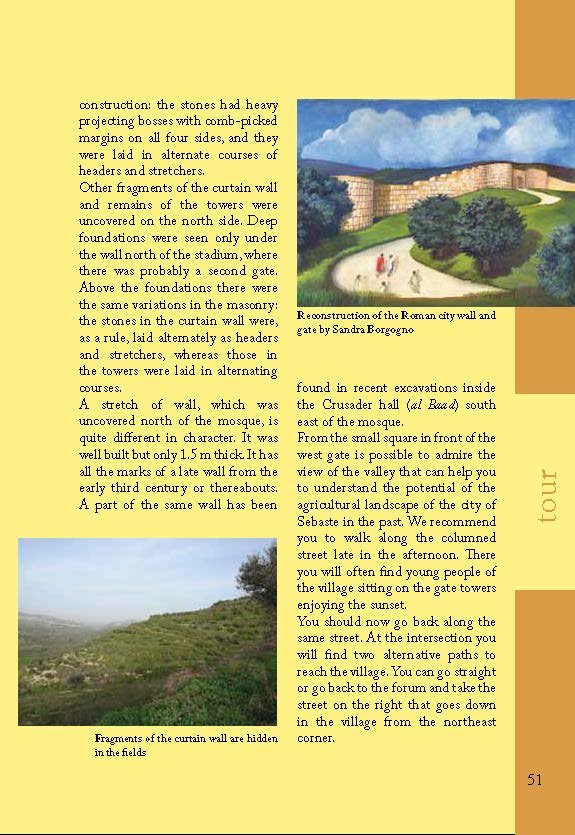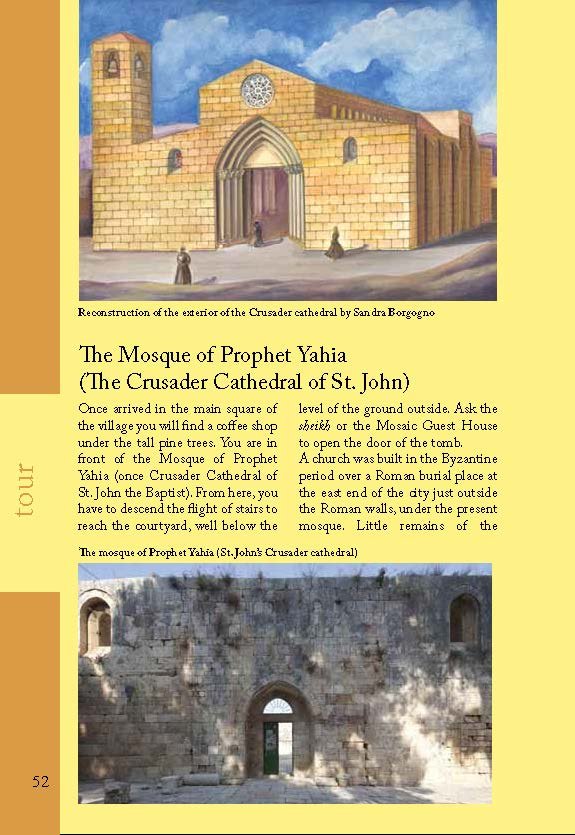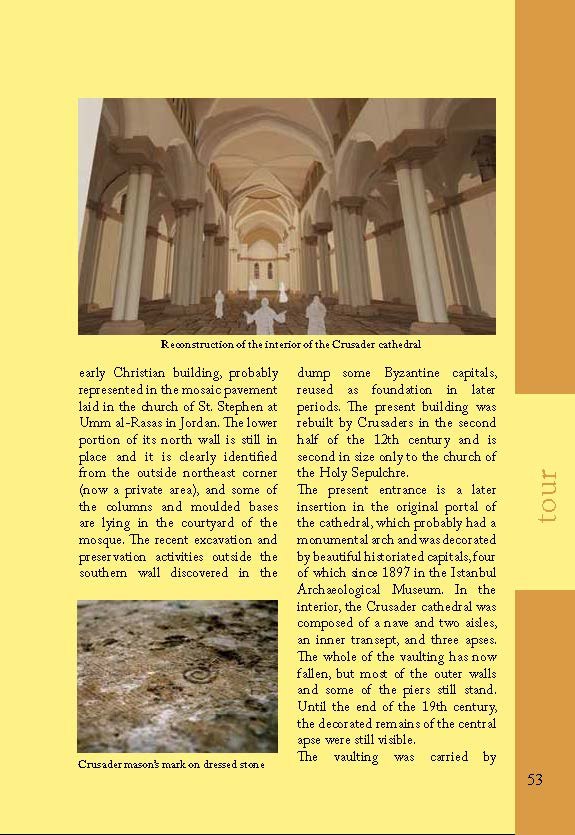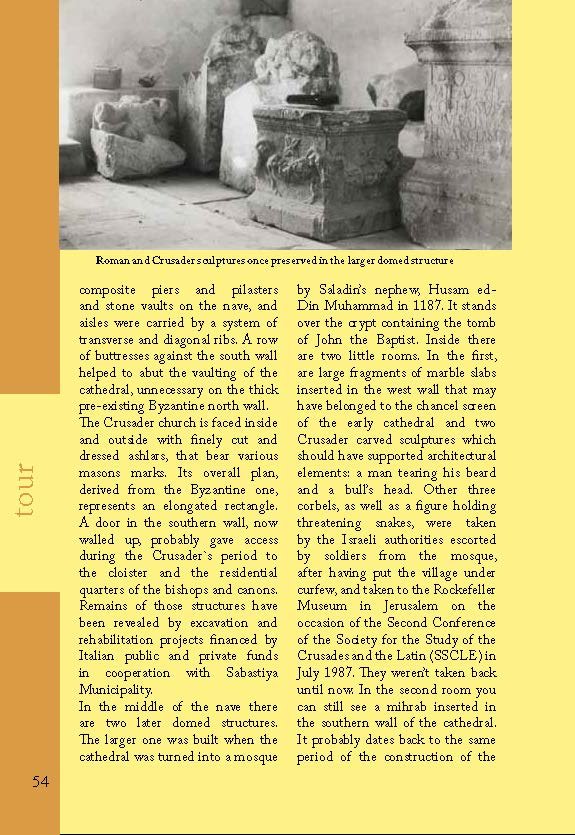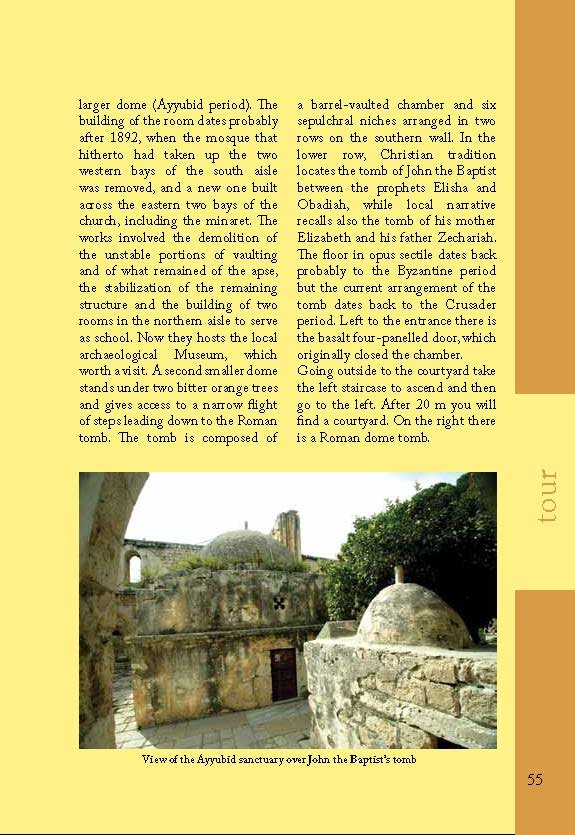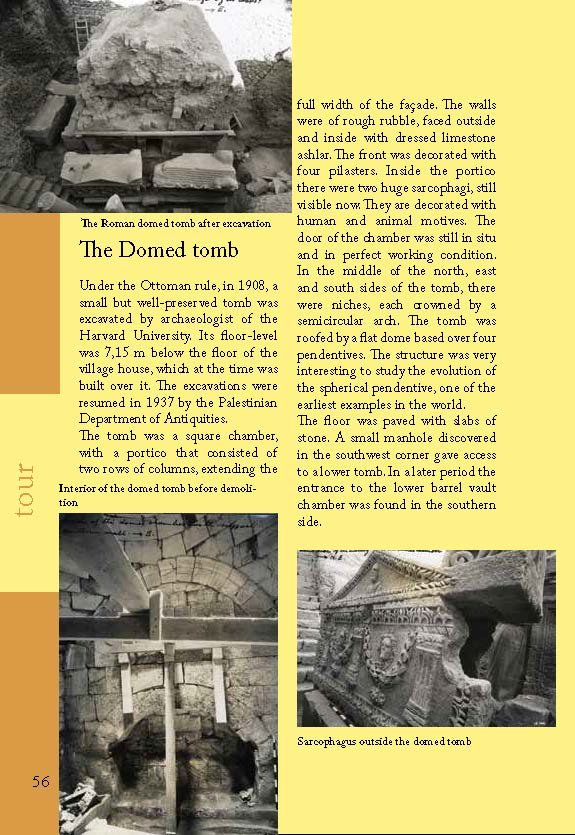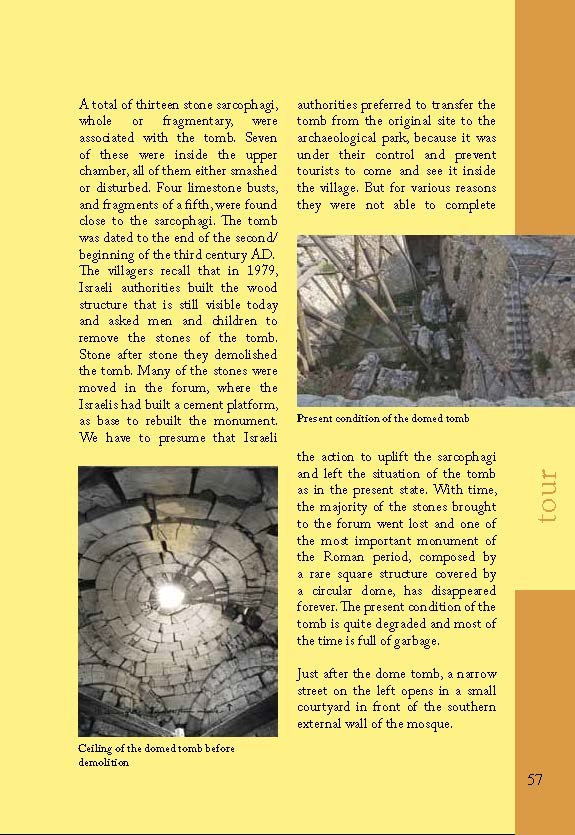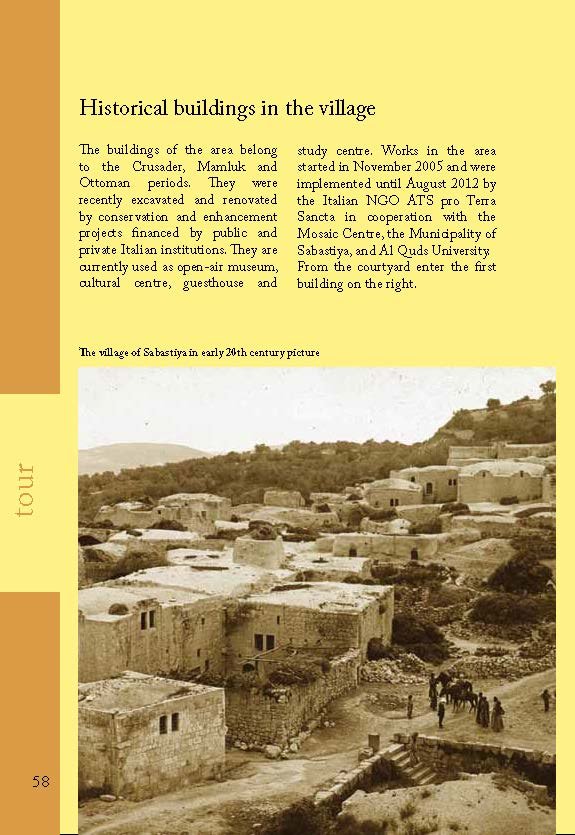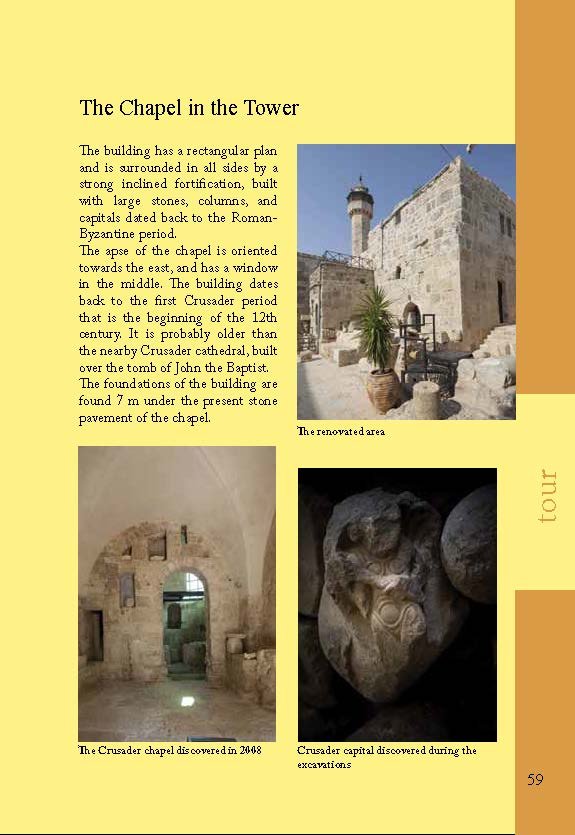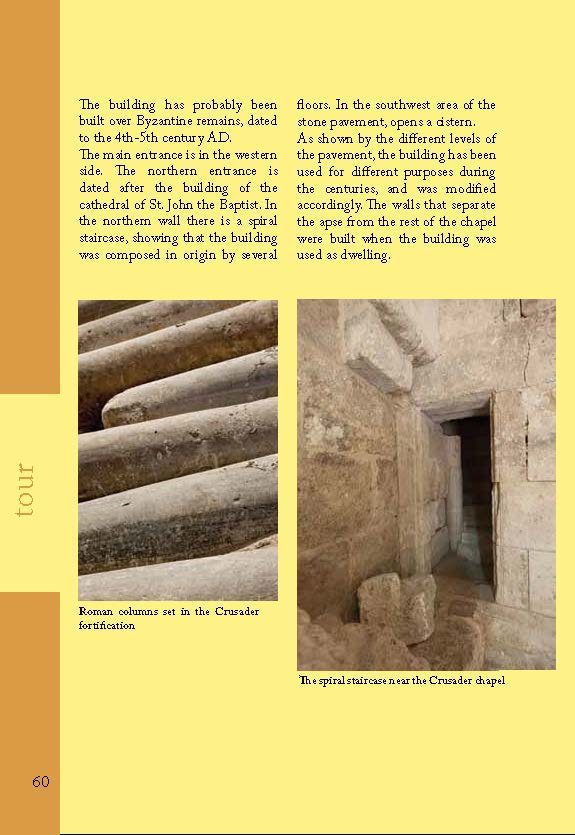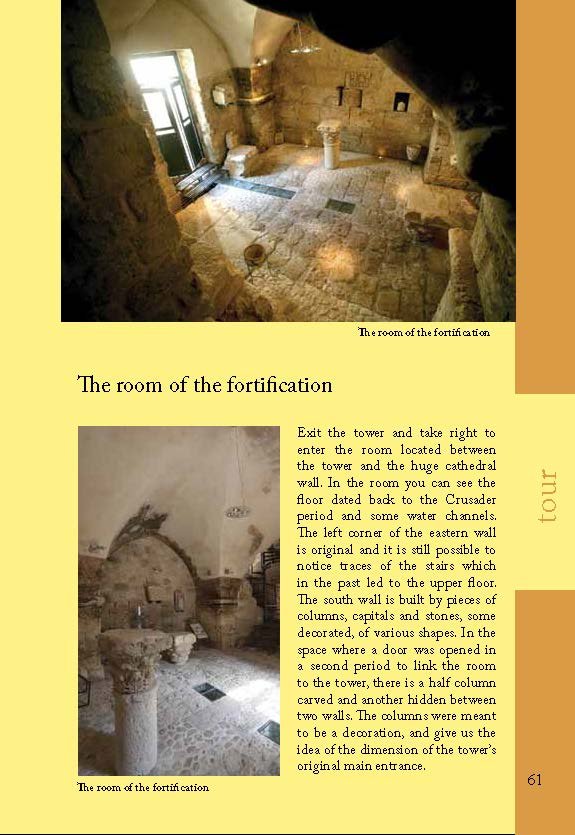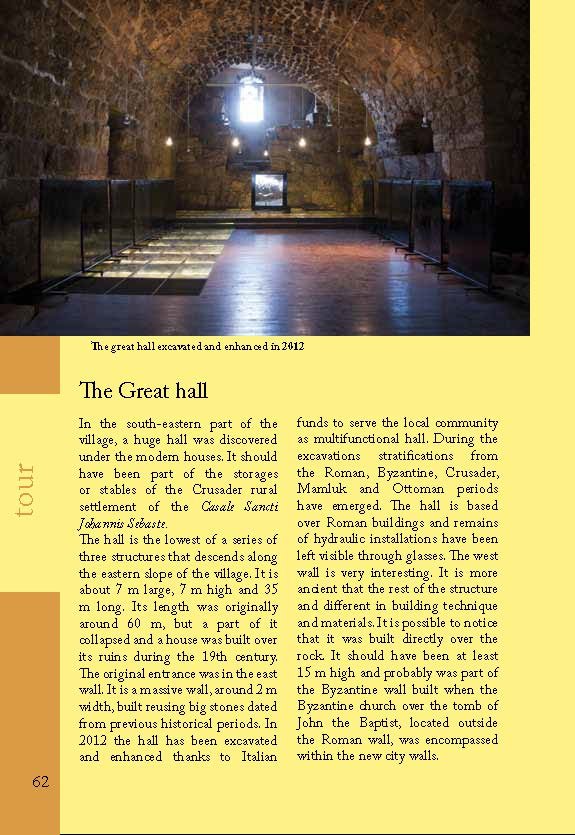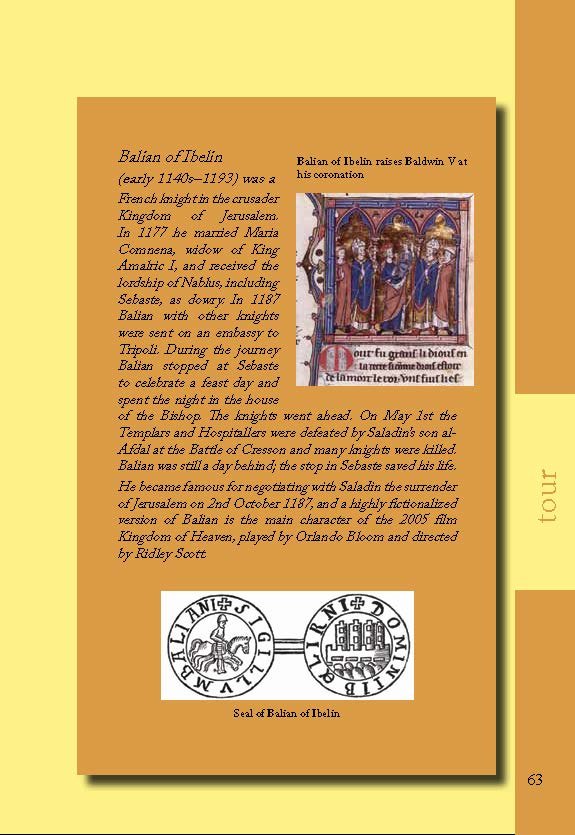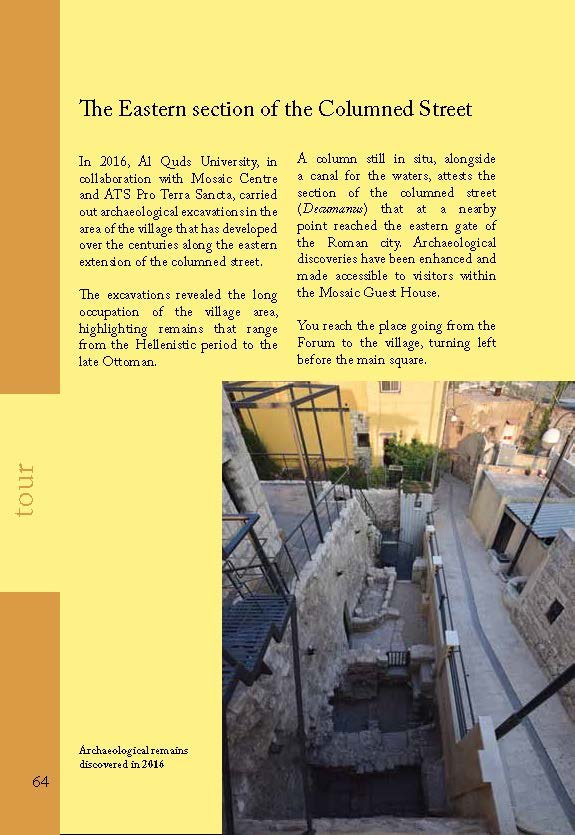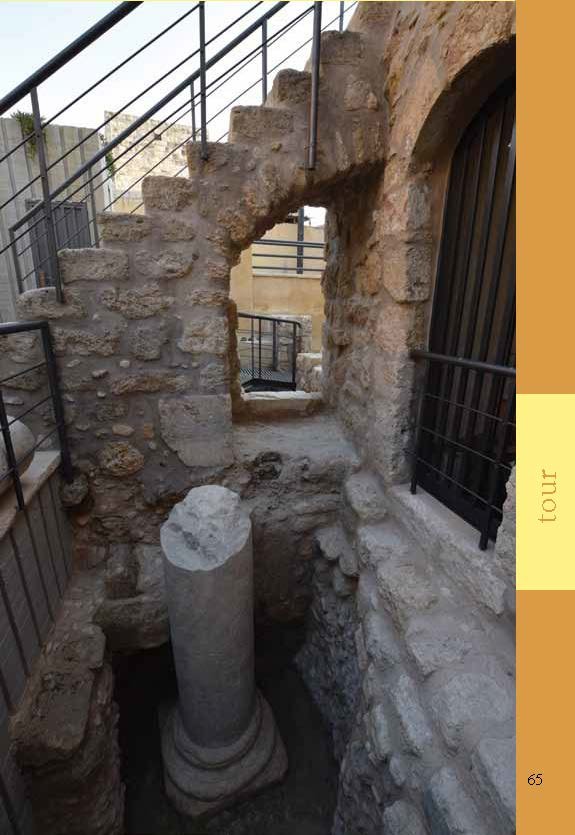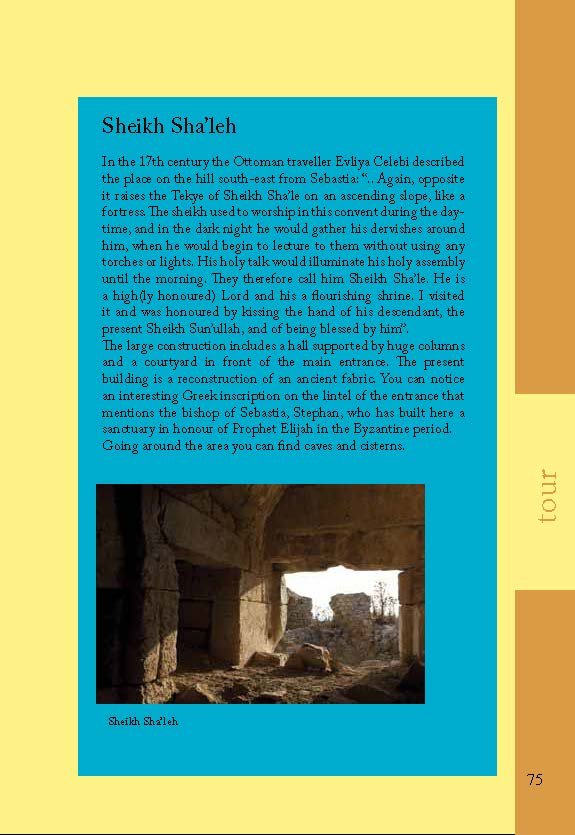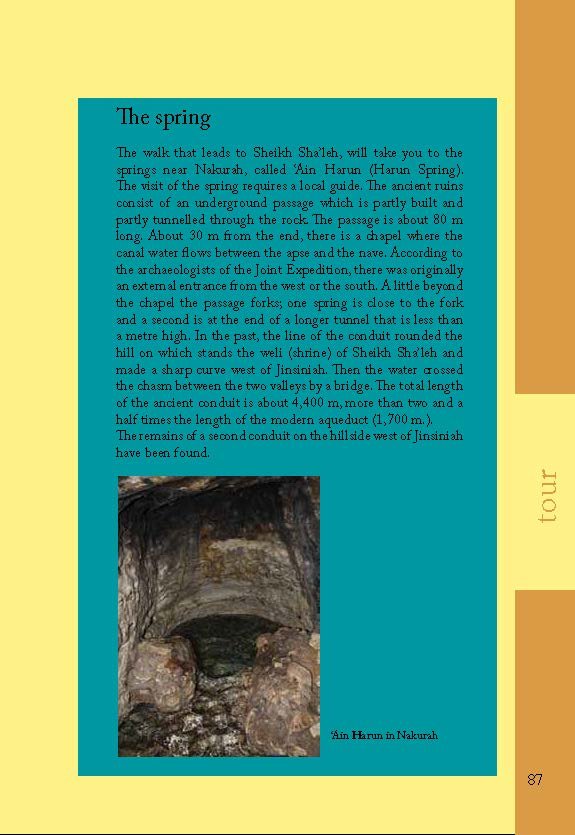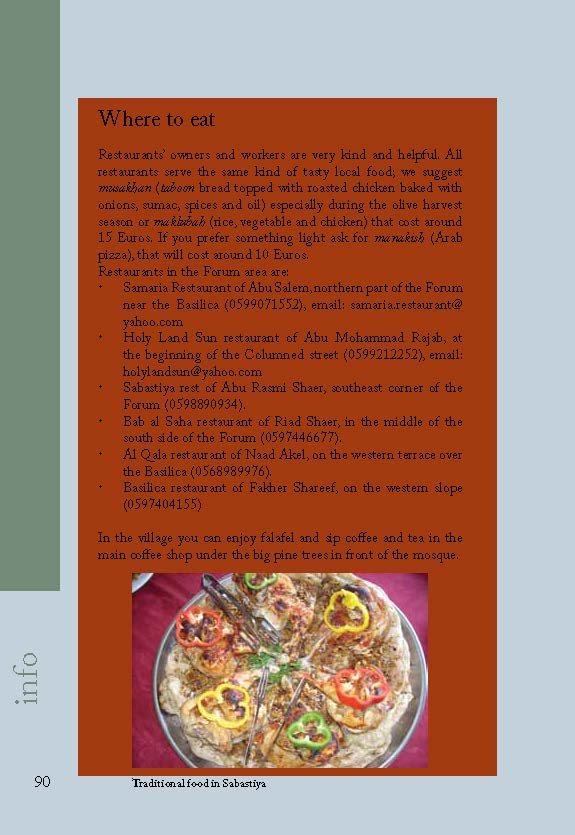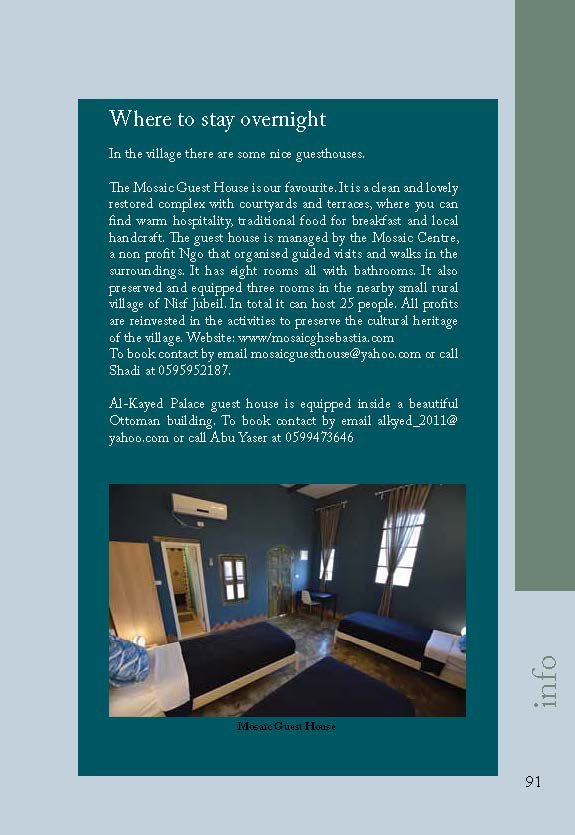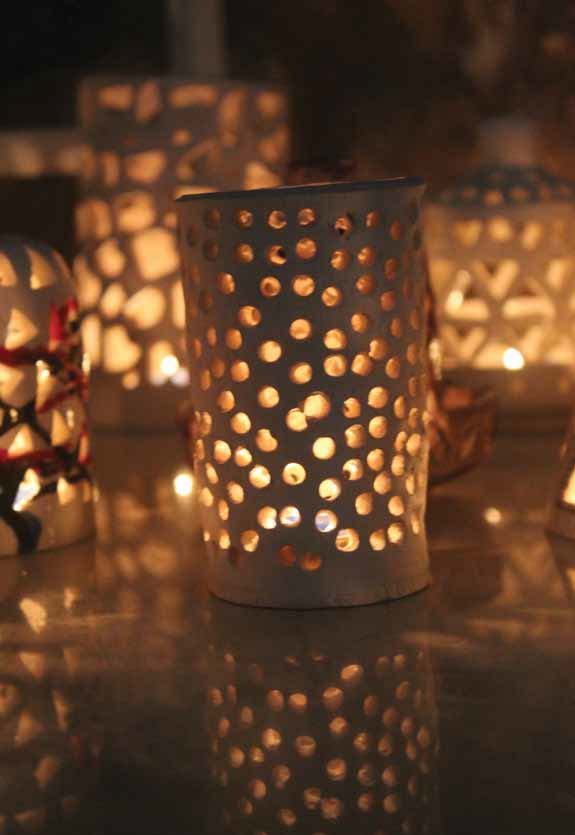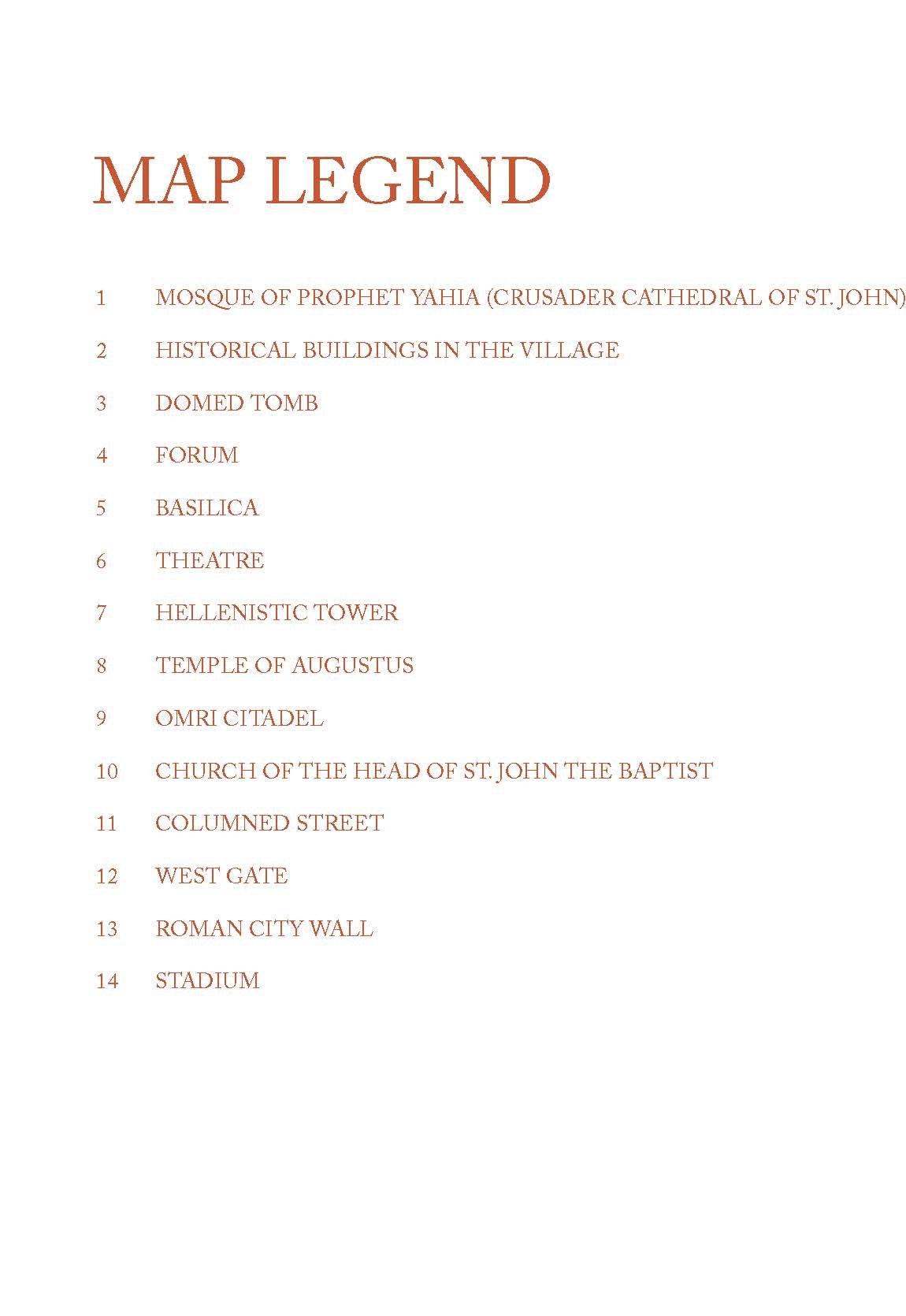Jerry Ren (Xuanming)
Tourism in Sebastia:Defence, Protection and Survival
INTRODUCTION
This project is investigated to searching some information about tourism in Sebastia. What is about the tourism in Sebastia? Why is the tourism so important in there? How do the different state (Israel and Palestine) make the action for the tourism in Sebastia? There are many parts which connect with the tourism, such as archaeology, booklets for tourists, guesthouse, sale and etc. , something is even about children, because they are the hope of Sebastia in the future.
Base map
The map marks the basic information about Sebastia and the surrounding area. According to the Oslo Accords, Palestine is divided into three areas, Area A,Area B and Area C. Area A is entirely under the Palestinian government; Area B is under the jurisdiction of the Israeli army but administered by the local government; and Area C is entirely under Israeli jurisdiction. Such a division of land has kept Sebastia in turmoil and the settler base Shavei Shomron, located to the south-west, will have some impact on life in Sebastia. In terms of tourism, Sebastia is rich in history and culture as well as archaeological sites, but due to the diversity of history and culture, the Israelis consider Sebastia to be one of their important lands as well, so this beautiful village is caught in a situation of survival under strong pressure.
BROUCHERS
Brochures of Sebastia in Israel and Palestine
These are tow covers of brochures for tourists, the left one is from Israel and they named the site in Area C as Sebastia National Park. The booklet mentioned that tourists who from Israel do not allowed to enter in village of Sebastia without the permission of IDF authoriites.
The following are details of the three different visitor's brochures. Firstly, the quality and quantity of the content shows that Sebastia has put a lot of effort into editing the visitor's brochures. The government of Sebastia and a number of foundations and public interest organisations are trying to get rid of the Israeli influence and develop a unique tourism industry.
Sebastia National Park
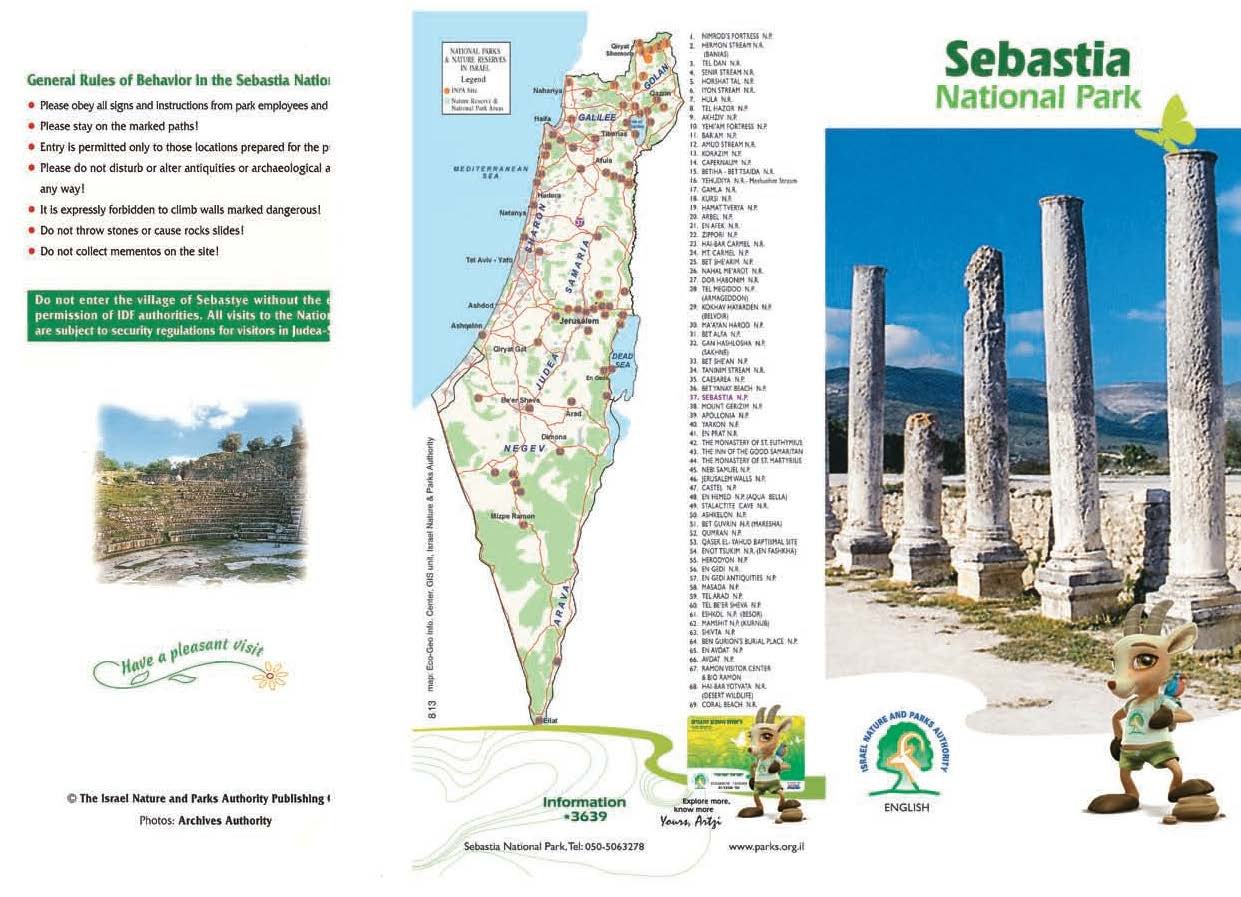
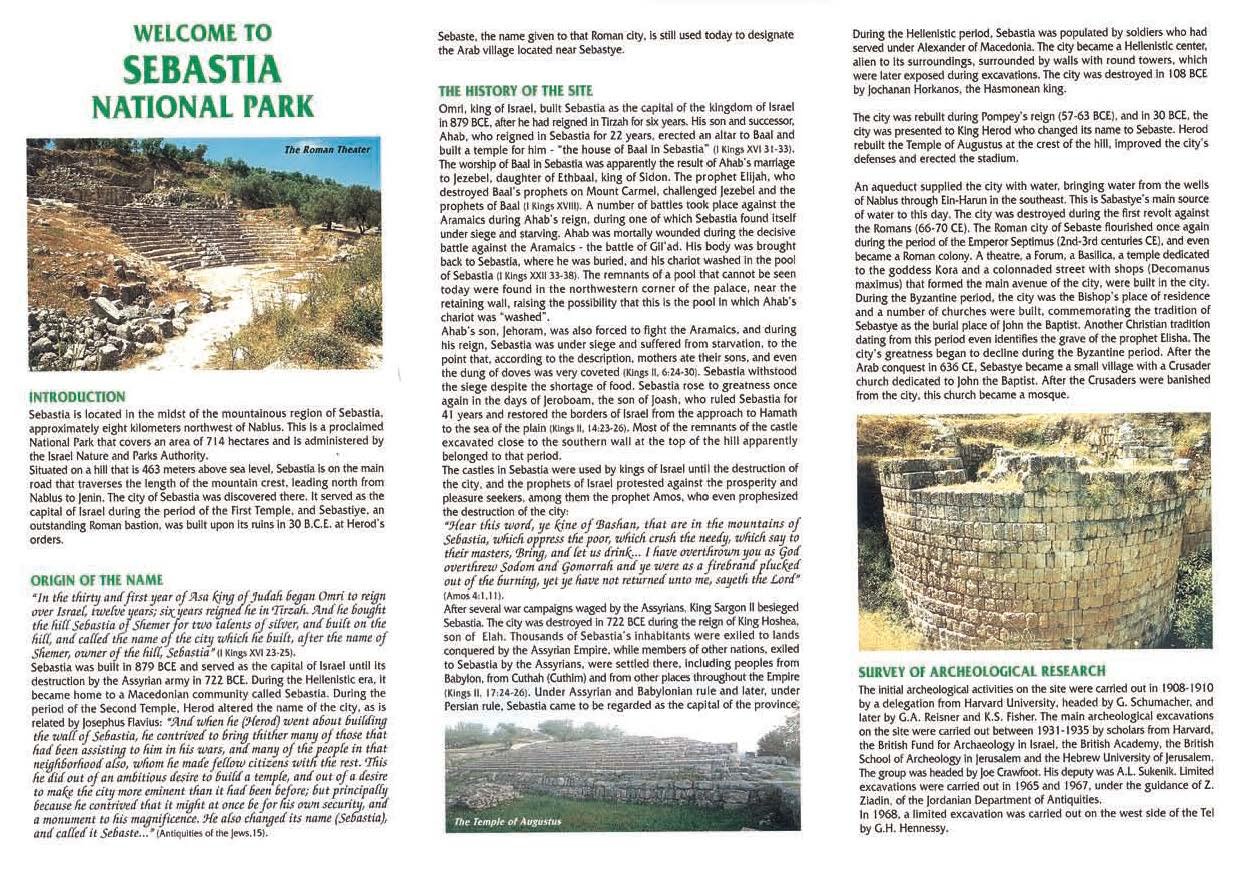
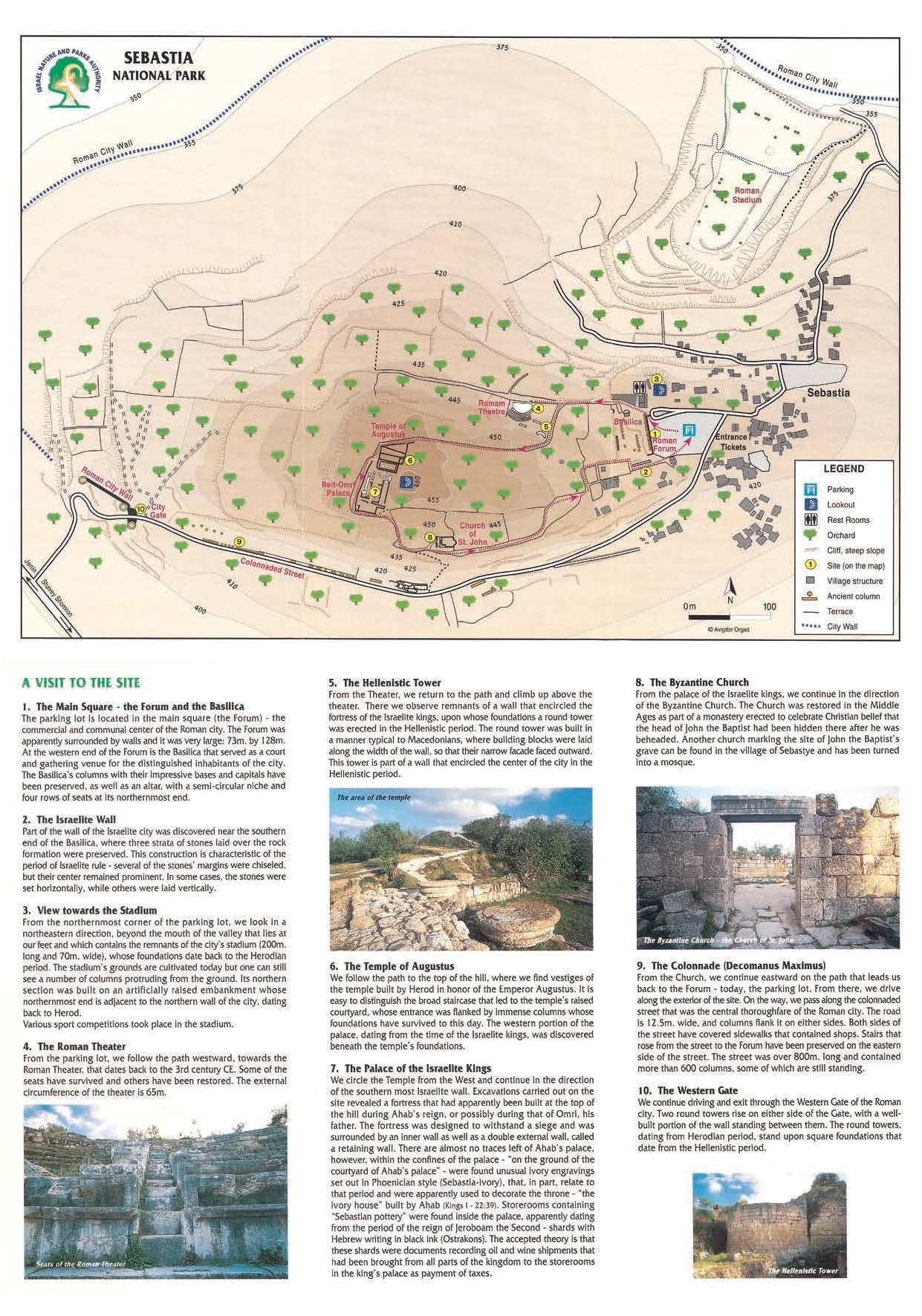
Sebastia children guided tour













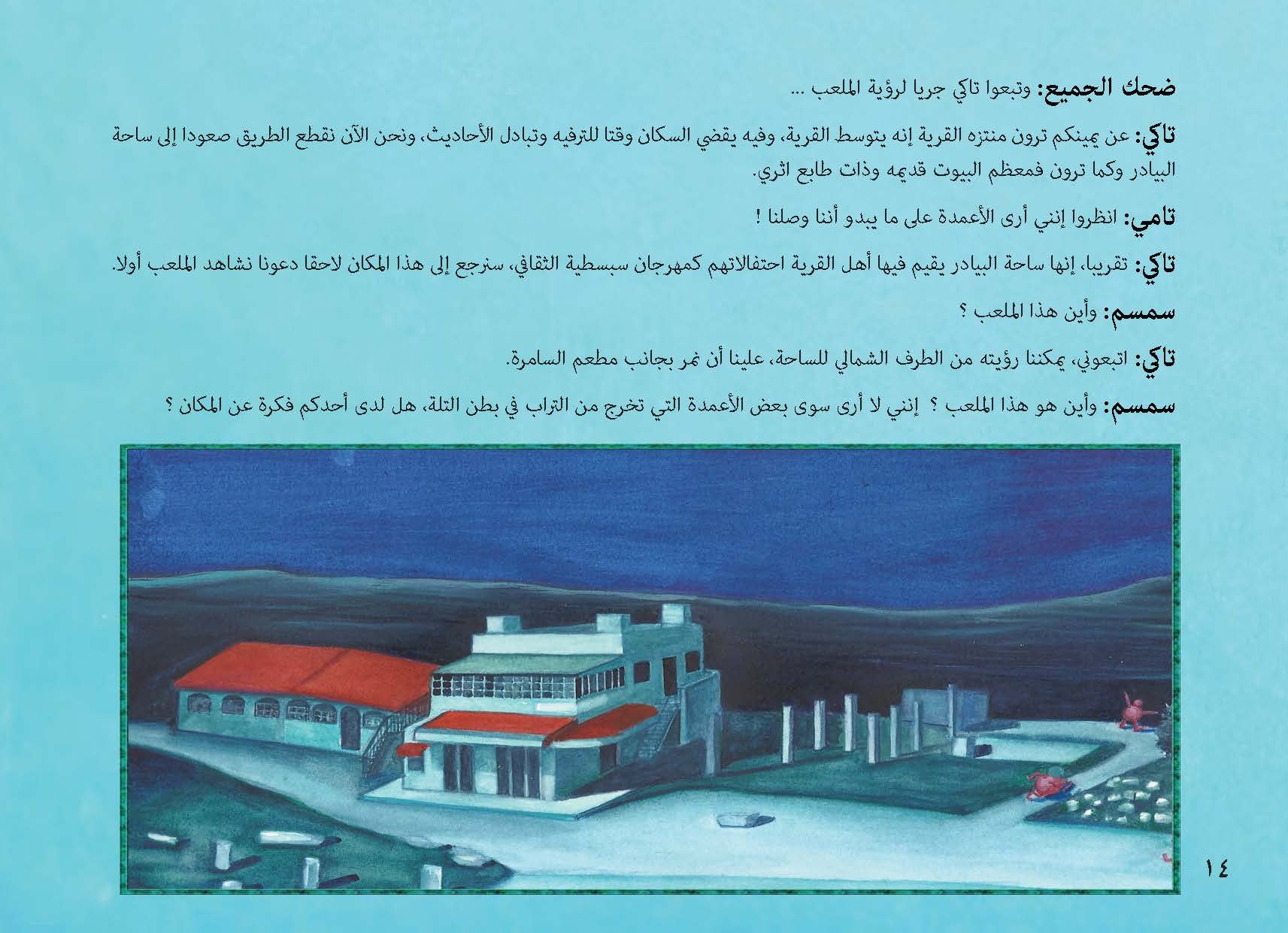















































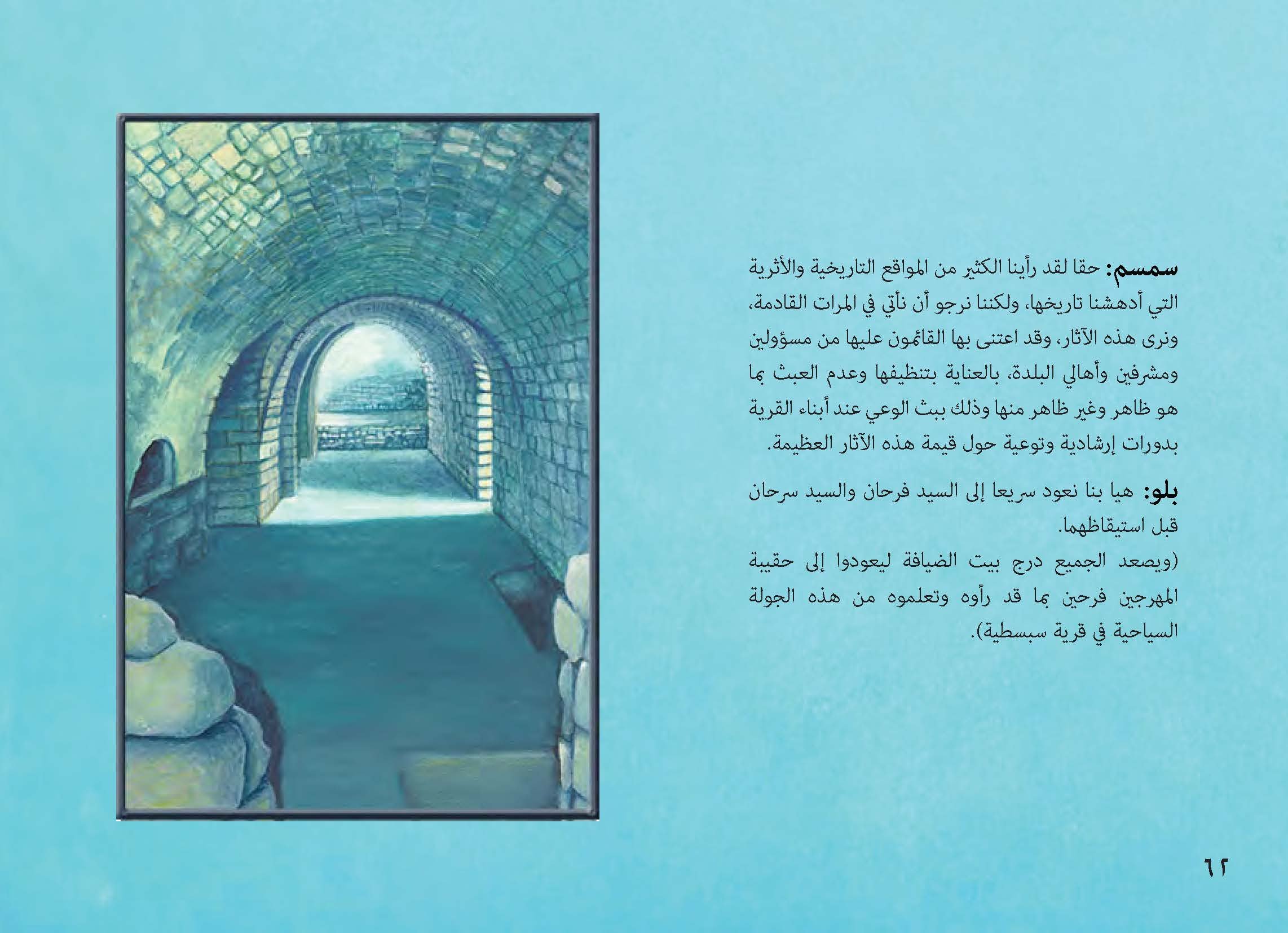

Sebastia tourists guide
Sebastia has created a beautiful travel brochure for children with lovely drawings and a detailed description of the history. They hope that Palestinian children will learn more about their culture through tourism.
ATTRACTIONS
The Theatre
The Church
The Basilica
The Forum
West Gate
The Hellenistic Defensive Tower
The Acropolis
Temple of Augustus
The Columned Street
The Mosque of Prophet Yahia
Maqam Sheikh Sha’leh
Massoudieh railway station
The Stadium

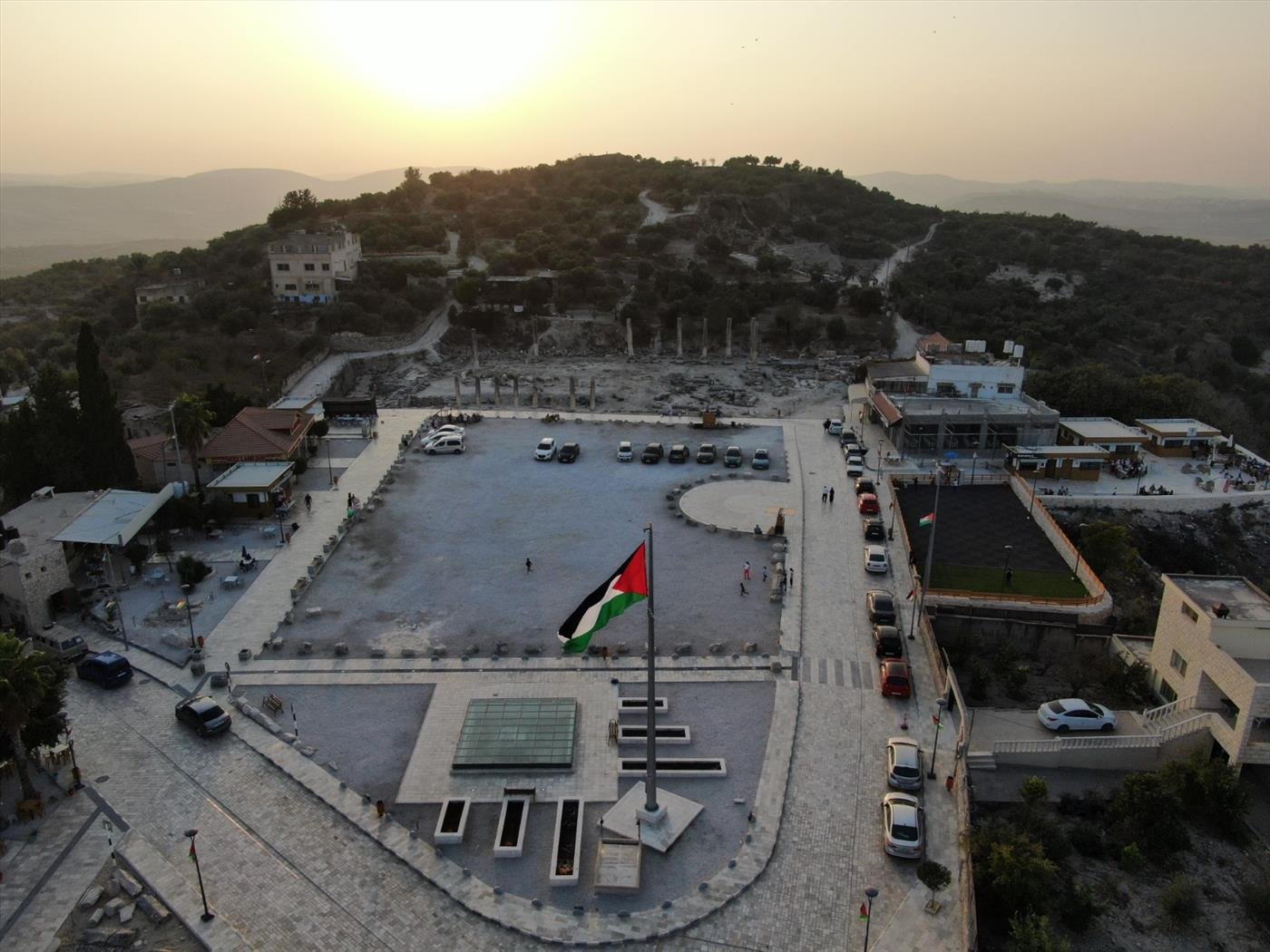



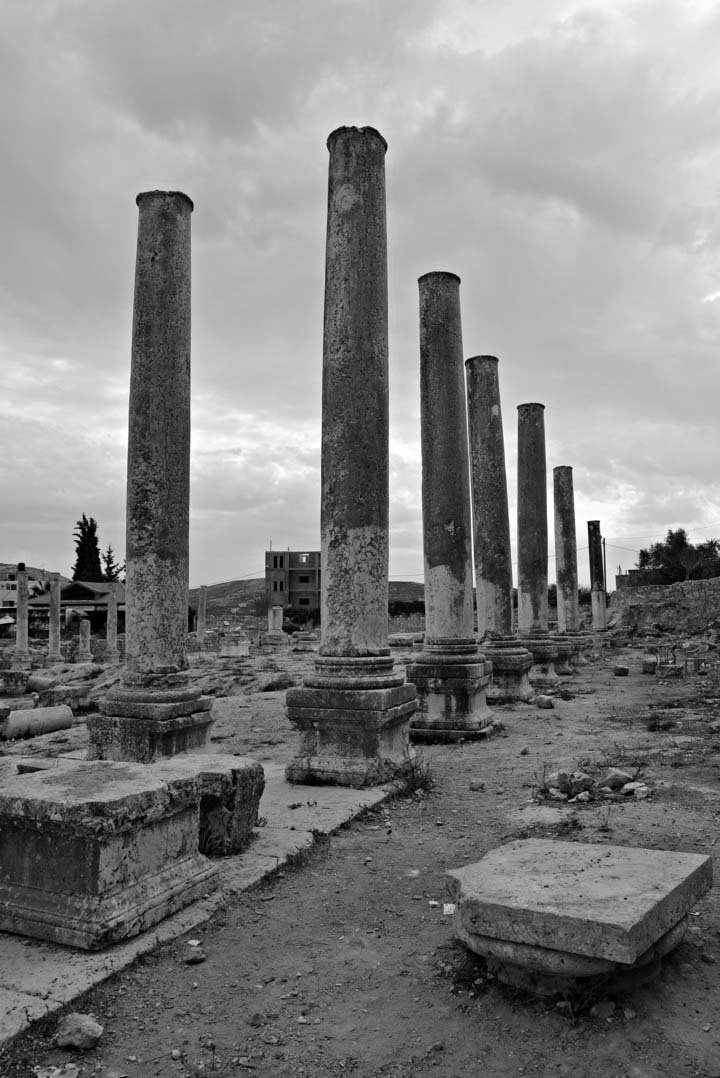



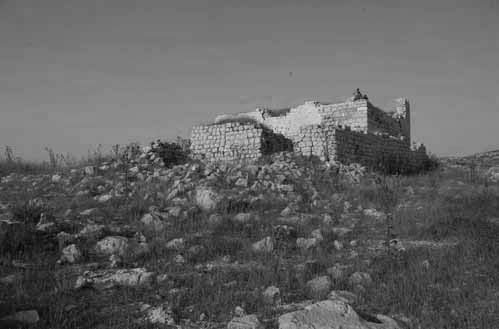




The four maps below show the recommended itineraries for visiting Sebastia, which are based on the suggestions given in the above-mentioned tourist brochure. three routes are offered to visitors to Sebastia, and all of them lead into other villages in the vicinity. The routes are sufficiently distinctive to differentiate them from the routes offered in the Israeli brochure and to strengthen the links between the Palestinian villages.
Travelling route from Israel
The National Park route starts with a coach drive to the Forum and travellers depart from the car park for a tour around the National Park before meeting back at the car park.
Trail from Sebastia to Maqam Sheikh Sha’leh
The route ends at Maqam Sheikh Sha'leh.
“.. Again, opposite it raises the Tekye of Sheikh Sha’le on an ascending slope, like a fortress. The sheikh used to worship in this convent during the daytime, and in the dark night he would gather his dervishes around him, when he would begin to lecture to them without using any torches or lights. His holy talk would illuminate his holy assembly until the morning. They therefore call him Sheikh Sha’le. He is a high(ly honoured) Lord and his a flourishing shrine. I visited it and was honoured by kissing the hand of his descendant, the present Sheikh Sun’ullah, and of being blessed by him”. Ottoman traveller Evliya Celebi described taht…
Trail from Nisf Jubeil to Sebastia
The short route from Nisf Jubeil starts and ends at the Mosaic Hotel and offers more local nature, such as olive trees, on the way.
Trail from Nisf Jubeil to Massoudieh through Sabastia and back
This is the longest tour of the trip, but it takes in all the sights of Sebastia and the surrounding area, be it the National Park in Area C or Nisf Jubeil in Area A. On the way, visitors can enjoy not only the old buildings along the streets, the olive trees in the plantation areas, the archaeological sites, but also the restaurants and cafes outside some of the sights and enjoy the local cuisine.
Attractions and breaks
There are a number of rest areas and souvenirs for sale in the vicinity of the attraction. The café next to the Forum is one of the resting places frequented by tourists, where they can enjoy a local coffee and talk to the owner for some interesting local facts beyond the tour. Next to the theatre there are local stalls selling speciality souvenirs, which relate to another important part of the tourism economy.
DEFENCE
What is the contemporary 'wall'?
In the past Sebastiya used walls to defend itself against enemy invasions, but how do people defend their land when there are no walls in the present? A study of the tour route shows that travelling between the three villages strengthens the links between villages. The walk can be seen as a kind of "rampart", which vows to the people who live in the area for its history and the close interconnection between people and the land. In the future, the Shavei Shomron may expand, which will cause Sebastia's inhabitants to be disturbed more often. If the tourists and the people can keep walking, then Sebastia and the surrounding villages can jointly resist the Israeli invasion.
"What both the interwar topographers and the situationists recognised was the transformative potential of large numbers of people regularly stepping outside the matrix, taking to the streets and walking, becoming active participants rather than passive spectators."
——<Why is the act of urban walking so revolutionary?>
CONNECTION
Ceramic Lab
Guest House
Mosaic
Food, Jam and Soap
Thanks to the support of the Mosaic Centre, Sebastia and Nisf Jubeil have built two Mosaic Guesthouses and opened the Ceramic Lab, which has allowed Sebastia's crafts to develop, where visitors can learn to make ceramics and also buy beautiful items.
Supports
Pro Terra Sancta is a network that promotes and implements projects for the conservation and enhancement of the cultural and natural heritage, to support local communities and help in humanitarian emergencies.
Fondazione Cariplo is a charitable foundation in Milan, Italy. It was created in December 1991 when the Amato law, Law no. 218 of 30 July 1990, came into force.
The Missionszentrale der Franziskaner (MZF, Franciscan mission centre) is a German development charity association of the Franciscan order, based in Bonn-Bad Godesberg and operating in many countries. It is focused on development of humanitarian, social and pastoral projects, and on education, information and human rights.
The Fondation Assistance International – FAI, is a humanitarian foundation, for the benefit of the general public, that was set up in 2002, pursuant to articles 80 and the following articles of the Swiss Civil Code.
Mosaic Centre is a non-governmental association established in 2004 that combines mosaic craftsmanship with ethical and social values. It has workshops in Jericho and Bethlehem.

